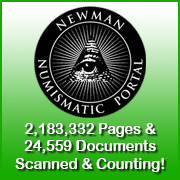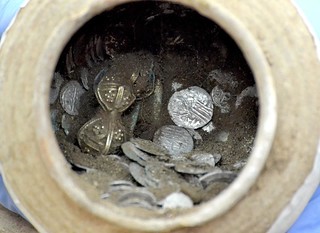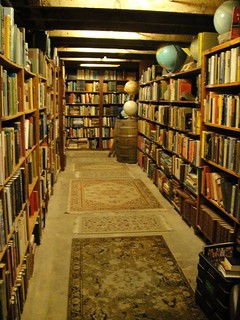
About UsThe Numismatic Bibliomania Society is a non-profit association devoted to the study and enjoyment of numismatic literature. For more information please see our web site at coinbooks.org SubscriptionsThose wishing to become new E-Sylum subscribers (or wishing to Unsubscribe) can go to the following web page link MembershipThere is a membership application available on the web site Membership Application To join, print the application and return it with your check to the address printed on the application. Print/Digital membership is $40 to addresses in the U.S., and $60 elsewhere. A digital-only membership is available for $25. For those without web access, write to: Terry White, Treasurer AsylumFor Asylum mailing address changes and other membership questions, contact Terry at this email address: terrywhite5475@yahoo.com SubmissionsTo submit items for publication in The E-Sylum, write to the Editor at this address: whomren@gmail.com BUY THE BOOK BEFORE THE COINSale Calendar |
- WAYNE'S WORDS: THE E-SYLUM SEPTEMBER 19, 2018
- ASYLUM AUTUMN 2018 ISSUE PUBLISHED
- NBS PRESIDENT'S AUTUMN 2018 MESSAGE
- KOLBE & FANNING BUY OR BID SALE NUMBER 7
- WATERLOW & SONS SPECIMEN BOOK SELLS
- NEW BOOK: AUTONOMOUS COINAGES UNDER THE LATE ANTIGONIDS
- NEW BOOK: SQUARE ISLAMIC COINS, 2ND ED.
- BANKNOTE BOOK GUERNSEY CHAPTER PUBLISHED
- SUMMER 2018 COMMUNITY CURRENCY JOURNAL PUBLISHED
- POLLOCK POWERFULLY PROVES PERSISTENCE PAYS
- AMERICAN NUMISMATIC SOCIETY SLIDE SERIES DIGITIZED
- MORE ON THE SHERLOCK HOLMES SILVER MEDAL
- ANOTHER EVERMAN COUNTERSTAMP FOUND
- NOTES FROM E-SYLUM READERS: SEPTEMBER 16, 2018
- FOLLOW-UP: HOLED COINS AS SLAVE CHARMS
- HEATON'S MONOGRAPH ON MINT MARKS
- VOCABULARY TERMS: COPIES & REPLICAS
- WILLIAM IDLER, SR. (1808-1901)
- INTERVIEW: NUMISMATIC BOOKSELLERS KOLBE & FANNING
- COINAGE ARTICLE INTERVIEWS JOHN FEIGENBAUM
- AMERICAN COIN USE IN PANAMA IN 1849
- MORE ON COINS IN ICELAND AND BRAZIL
- MINTING YOUR OWN COINS FROM SCRATCH
- THE COINAGE OF SPARTA
- ROMAN IMPERIAL GOLD HOARD FOUND IN ITALY
- 14TH CENTURY TREASURE FOUND IN BULGARIA
- RARE SAXONY DOUBLE DUCAT FOUND
- THE FIRST GOLD COIN OF PARAGUAY
- 'MONEY TIME' AUTHOR WINS 2018 SHEKEL PRIZE
- IMPORTANT HOCKEY MEDALS OFFERED IN BELL AUCTION
- SOTHEBY'S OFFERS FEYNMAN NOBEL PRIZE MEDAL
- SRI LANKA'S VARNISHED BANKNOTES
- SRI LANKAN BANKNOTE ULTRAVIOLET LIGHT FEATURES
- LOOSE CHANGE: SEPTEMBER 16, 2018
- FEATURED WEB SITE: OLYMPIC MEDALS
Click here to access the complete archive
To comment or submit articles, reply to whomren@gmail.com
Content presented in The E-Sylum is not necessarily researched or independently fact-checked, and views expressed do not necessarily represent those of the Numismatic Bibliomania Society.
WAYNE'S WORDS: THE E-SYLUM SEPTEMBER 19, 2018
 This week we open with a new issue of our
print journal The Asylum, our President's Message, recent and upcoming numismatic literature sales, and three new books.
This week we open with a new issue of our
print journal The Asylum, our President's Message, recent and upcoming numismatic literature sales, and three new books.
Other topics this week include community currency, the Everman counterstamp, slave charms, American coins in Panama, Heaton's Mint-Marks, the first Paraguayan numismatist, interviews with hobby figures, copies & replicas, the coinage of Sparta and minting your own coins from scratch.
To learn more about the John W. Adams sale, Waterlow & Sons, square Islamic coins, hockey medals, provenance and pedigree, the Saxony double ducat, and the first gold coin of Paraguay, read on. Have a great week, everyone!
Wayne Homren
Editor, The E-Sylum
ASYLUM AUTUMN 2018 ISSUE PUBLISHED
The latest issue of our print journal The Asylum is on the way to the mailboxes of Numismatic Bibliomania Society members. Here is the table of contents. Another great issue - I'm looking forward to reading the articles and accounts from our meetings in Philadelphia. -Editor
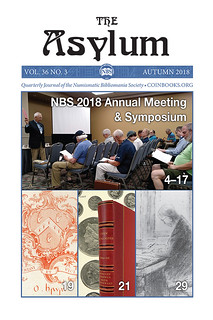 The Asylum
The Asylum
Autumn 2018
Vol. 38 No. 3
Table of Contents:
Numismatic Bibliomania Society Symposium
By Joel J. Orosz
Numismatic Bibliomania Society 39th Annual Meeting and Auction
By Joel J. Orosz
The Asylum Awards
Numismatic Literature Displays at the World’s Fair of Money
John Yonge Akerman’s Coins of the Romans Relating to Britain
By David Pickup
The John W. Adams Sale: A Personal Account
By Jeff Dickerson
In Memory of a Man I Never Met: William S. Reese (1955–2018)
By David F. Fanning
Numismatic Shop Talk
By Myron Xenos
Message from the President
By Tom Harrison
While The E-Sylum is free to all, only paid members of the Numismatic Bibliomania Society receive our print journal, The Asylum. Print/Digital membership is $40 to addresses in the U.S., and $60 elsewhere. A digital-only membership is available for $25. -Editor
To join NBS or renew your annual membership, see:
http://www.coinbooks.org/about/membership.html
NBS PRESIDENT'S AUTUMN 2018 MESSAGE
Here's is NBS president Tom Harrison's message from the latest issue. Thanks to Maria Fanning for providing the text. -Editor
Message from the President
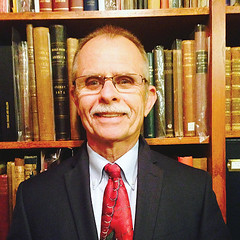 In this issue I would like to share a few
observations and thoughts from our NBS events at the ANA Convention in Philadelphia. The week provided a number of opportunities for numismatic bibliophiles to gather and enjoy
our fine hobby.
In this issue I would like to share a few
observations and thoughts from our NBS events at the ANA Convention in Philadelphia. The week provided a number of opportunities for numismatic bibliophiles to gather and enjoy
our fine hobby.
This year we renewed our tradition of hosting a club table. The table, located next to literature dealers Charles Davis and Kolbe and Fanning, offered literature enthusiasts a chance to meet, enjoy a marvelous Chapman Brothers M.A. Brown Sale display, view Friday’s auction items and purchase NBS souvenir coffee mugs. I would like to thank those who manned the table and encouraged new members to join the club.
This year we had over twice the number of donors to the NBS benefit auction as compared to 2017. There was an amazing variety of quality lots that sparked spirited bidding on many items. These donors, coupled with twenty enthusiast bidders, raised over $9000! This was certainly a testament to our members’ commitment to the mission of the NBS.
On Thursday I was honored to accept the ANA Outstanding Club Publication second place award for The Asylum. To quote Caleb Noel, Managing Editor, of The Numismatist, “We had a large number of submissions this year, and your publication stood out from the rest!” Congratulations to our talented and dedicated editor Maria Fanning and all of the fine authors.
I was pleased to see three exhibits in the numismatic literature category this year. There were also a number of other displays that included literature to enhance their exhibits with one four case award winner using two cases of books.
For a full report of the NBS Symposium and General Meeting please read Joel Orosz’s fine accounts in this issue. For most conventioneers time is precious as they attempt to connect with friends, visit favorite dealers, check out collector displays, attend club meetings, take advantage of educational opportunities and the list goes on. The NBS is fortunate to have many dedicated members who generously gave of their time, talents and resources to assure the success of our events. Reflecting on the week, I was most gratified to see a greater membership participation in our events that demonstrated an increased vitality in the NBS
For more information on the Numismatic Bibliomania Society, see:
http://www.coinbooks.org/
KOLBE & FANNING BUY OR BID SALE NUMBER 7
Numismatic Booksellers Kolbe & Fanning submitted this announcement of their seventh “Buy or Bid Sale” which closes on September 28, 2018. Good luck, everyone! -Editor
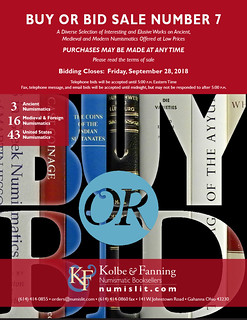 Kolbe & Fanning
Numismatic Booksellers have announced their seventh “Buy or Bid Sale,” which begins now and will close on Friday, September 28. The sale focuses on modestly priced books, giving
collectors an opportunity to add to their libraries at minimal cost.
Kolbe & Fanning
Numismatic Booksellers have announced their seventh “Buy or Bid Sale,” which begins now and will close on Friday, September 28. The sale focuses on modestly priced books, giving
collectors an opportunity to add to their libraries at minimal cost.
There will be no printed catalogue. The PDF catalogue is available now for downloading from the Kolbe & Fanning website at numislit.com.
As the name of the sale suggests, customers may bid on items they wish to acquire or buy them outright at the published price. The Terms of Sale will give full instructions on how to participate: please read it carefully.
The sale includes over 1300 works on ancient, medieval and modern coins, as well as general works, periodicals and sale catalogues. “Buy” prices have been kept low to promote sales. To further encourage participation, the firm is offering free domestic shipping to bidders spending at least $500; there will also be no packing and processing fee for this sale. Again, please read the Terms of Sale before participating.
If you have any questions about the sale, please write the firm at orders@numislit.com. Thank you in advance for your participation. Download the sale today: numislit.com.
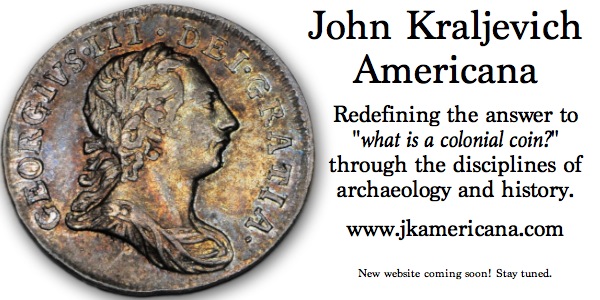
WATERLOW & SONS SPECIMEN BOOK SELLS
A book of specimen notes produced by Waterlow & Sons brought £205,000 at auction. -Editor
 A book of specimen
banknotes printed for locations across the world has set a house record for Tring Market Auctions (17.5% buyer’s premium) by selling for £205,000.
A book of specimen
banknotes printed for locations across the world has set a house record for Tring Market Auctions (17.5% buyer’s premium) by selling for £205,000.
It was produced by Waterlow & Sons, the world-famous printing firm which had factories in Dunstable and Watford close to the saleroom, and the book boasted an impressive provenance. An elderly lady who lived locally brought to the saleroom in a plastic bag. It came from her late husband who had worked at Waterlow’s.
“When Waterlow’s shut at that location during the tidying up they allowed him to take that book,” said Tring Market Auctions director Stephen Hearn. “It was in beautiful condition, one of those with tissues between each page and we had to be so careful opening it up because it hadn’t been opened for years.”
The book, estimated at £500-700, sold to a London buyer in the room. It contained about 70 specimens of the front and back of each note together with 10 share certificates.
Hearn added: “There was a lot of pre-sale interest which developed into six principal banknote collectors there on the day, and it was quite obvious the estimate was just a come-and-get-me estimate really. We did have an idea before the sale they would go on to a higher level - but not to that level.”
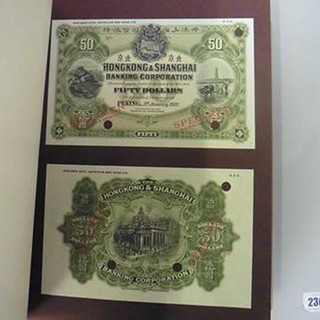

While the condition and provenance certainly helped, feedback from the bidders suggested that a Chinese specimen banknote was key – one that collectors knew existed but had not been available up to now. Hearn said all the specimen notes were very collectable, with the Chinese example maybe valued about £50,000 but many other rarities probably around the £10,000 mark.
Waterlow & Sons was once one of Britain’s largest printers of bank notes, postage stamps, and other material.
To read the complete article, see:
Rare specimen banknotes book sets auction
record at Hertfordshire saleroom (https://www.antiquestradegazette.com/news/2018/rare-specimen-banknotes-book-sets-auction-record-at-hertfordshire-saleroom/)
NEW BOOK: AUTONOMOUS COINAGES UNDER THE LATE ANTIGONIDS
Demetrius Siatras announced the availability of a new book. Thanks to David Sundman and Bruce Perdue for passing this along. -Editor
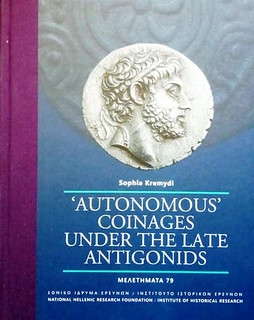 A new numismatic
book on the coins of Alexander's Diadochoi is now available. To place orders you may contact me at demmath@hotmail.com .
A new numismatic
book on the coins of Alexander's Diadochoi is now available. To place orders you may contact me at demmath@hotmail.com .
Autonomous Coinages Under the Late Antigonids
by Sophia Kremydi
Athens: National Hellenic Research Foundation, 2018.
MELETEMATA Series, No. 79.
In English.
Hard cover, 24x28 cm, 408 pp. + 71 plates;
shipping weight 2,5 kgr.
ISBN: 978-960-9538-69-5
Pricing:
Austria, Belgium, Croatia, Denmark, Germany, Hungary, Lichtenstein, Netherlands, Poland, Slovakia, Czechia, EUR 142.00
France, Italy, Ireland, Latvia, Lithuania, Luxembourg, Monaco, Romania, Slovenia, United Kingdom, EUR 146.50
Bulgaria, Estonia, Malta, Portugal, Spain, Sweden, EUR 149.50
Norway, Switzerland, EUR 156.50
ALL OTHER COUNTRIES, EUR 168.00
NEW BOOK: SQUARE ISLAMIC COINS, 2ND ED.
Ed Hohertz has published a new edition of his book on square Islamic coins. He submitted the following information. Congratulations! -Editor
 After finishing A
Catalog of the SQUARE ISLAMIC COINS of Spain, Portugal, and North Africa, 1130-1816 A.D. there was no thought of writing a second edition. However, after the first was
published, previously unknown coins ‘came out of the woodwork’, including a hoard of square coins with new types and variations. This prompted me to make a comprehensive work on
the minor coinages for these dynasties, and the round coins needed to be included.
After finishing A
Catalog of the SQUARE ISLAMIC COINS of Spain, Portugal, and North Africa, 1130-1816 A.D. there was no thought of writing a second edition. However, after the first was
published, previously unknown coins ‘came out of the woodwork’, including a hoard of square coins with new types and variations. This prompted me to make a comprehensive work on
the minor coinages for these dynasties, and the round coins needed to be included.
The second edition is now published. All of the silver and bronze coins (square and round) and square gold coins issued by the following groups are cataloged:
- Pro Muwahhid Taifas
- Muwahhidun
- Hafsids
- Taifas Almohades (Algarve, Ceuta, Lorca, Later Hudids of Murcia, Seville, and Valencia)
- Nasrids (including square gold pieces)
- Marinids
- Ziyanids
- Wattasids
- Sa'dian Sharifs (up to 981 / 1574)
- Ottomans (only square coins to 1232 / 1816)
- Millares, Christian imitations of the Muwahhid dirhams
Each chapter begins with a one or two page overview of the types for ease in locating a coin.
- Legends written in Arabic and English.
- References with the coin’s weight and size are given.
- Coins are illustrated with improved drawings.
- Rarity is estimated for each type.
Additional tools for help in identifying a coin include the following:
- Index of legends, phrases, and words.
- Index of mints.
- Mint signature variations illustrated with 155 drawings.
- Plates with drawings of 481 coins.
The 314 page book is listed by the publisher on the website at: http://www.identificacion-numismatica.com/h48-libros . It can be ordered by sending an email to the publisher, OMNI, at: editorialesOMNI@gmail.com .
BANKNOTE BOOK GUERNSEY CHAPTER PUBLISHED
Owen Linzmayer publishes The Banknote Book, a useful, constantly updated electronic reference. On September 14, 2018 he announced via email the availability of the chapter on the banknotes of Guernsey. -Editor
 I'm pleased to
announce the Guernsey chapter is now available for individual sale at US$9.99, and as a free download to subscribers.
I'm pleased to
announce the Guernsey chapter is now available for individual sale at US$9.99, and as a free download to subscribers.
I'm particularly proud of this chapter as it incorporates facts and figures unearthed in official records dating back 200 years, helping to explain the historical context of how and why these notes were issued. Many notes listed in the SCWPM are proven to be nonexistent, and many rare previously unlisted note types are now properly documented. Furthermore, listings include detailed date varieties, along with serial number and prefix ranges. See for yourself why one contributor and avid collector stated, "You now have the best treatise on Guernsey banknotes presently available."
Guernsey (Europe)
This 33-page catalog covers notes issued by Bishop De Jersey & Company from 1808 to 1809, Macculloch, Allaire, Bonamy & Company from 1808 to 1809, Guernsey Banking Company
from 1827 to 1923, Guernsey Commercial Banking Company from 1835 to 1921, Southern District Banking Company in 1838, and States of Guernsey from 1816 to present. Published
14.09.2018.
Currently 271 chapters of The Banknote Book have been published as individual high-resolution PDF files. This represents a total of 4,963 pages covering 46,263 types and varieties.
For more information on The Banknote Book, see:
http://www.banknotenews.com/banknote_book/banknote_book.php
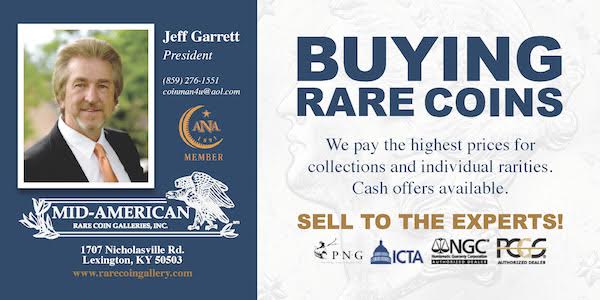
SUMMER 2018 COMMUNITY CURRENCY JOURNAL PUBLISHED
The Summer 2018 issue of the International Journal of Community Currency Research has been published. There is much academic research in this field; local or community currencies are a worldwide phenomenon. Here's the table of contents. -Editor
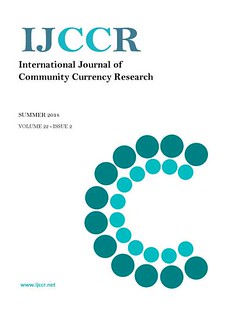 Editorial: Building community,
promoting the commons, and surfing the digital wave
Editorial: Building community,
promoting the commons, and surfing the digital wave
Filipe M. Alves
IJCCR Publications: a literature review 2009-2016 Filipe M. Alves and Rui F. Santos
The District Currency: a new currency design for managing the commons
Jens Martignoni
Forms of money power and measure of economic value. The alternative currencies coping with care of commons
Maurizzio Ruzzene
A digital community bank: mapping negotiation mechanisms in its consolidation as an alternative to commercial banks
Eurídice Gomes da Silva Hernandes, Erica Souza Siqueira, Eduardo Henrique Diniz and Marlei Pozzebon
Extending Blockchain Technology to host Customizable and Interoperable Community Currencies
Gustav R.B. Friis and Florian Glaser
Swiss impact currency: improving the impact of currency systems for a sustainable economy in Switzerland
Christophe Place, Antonin Calderon, James Stodder and Isidor Wallimann
Sustainability of local complementary currencies: conclusions from an empirical study in Poland
Grzegorz Sobiecki
Identifying barriers and solutions to adoption of social, complementary and/or virtual currencies
Clara Inés Peña de Carrillo, Josep Lluís de la Rosa i Esteva, Paulo Nicolás Carrillo Peña and Peter Pharow
To read the complete article, see:
New Issue now online (https://ijccr.net/2018/09/13/new-issue-now-online/)
To read the complete issue, see:
https://ijccr.net/current-issue/
POLLOCK POWERFULLY PROVES PERSISTENCE PAYS
Peter Huntoon submitted this follow-up to the earlier Newman Numismatic Portal announcement of the addition of Andrew Pollock's compilation of data relating to National Bank issues. Thanks! -Editor
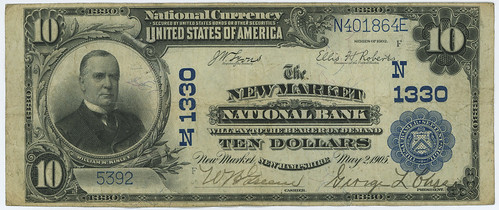
The August 26, 2018 issue of The E-Sylum, the on-line weekly publication of the Numismatic Bibliomania Society edited by Wayne Homren, contained an announcement from Newman Numismatic Portal project coordinator Len Augsburger that the portal had just received a huge accession from Andrew Pollock III pertaining to national bank notes.
The announcement revealed that Pollock had compiled a complete yearly listing of the bank presidents and cashiers that he abstracted from the annual reports of the Comptroller of the Currency for all 14,348 national banks chartered through 1935.
Whoa, this was beyond belief! National bank note collectors have been dreaming about a compilation of that data for decades but the task was so huge, it had never been accomplished.
I immediately logged on to the portal and with a little guidance from Len Augsburger was able to access this trove. Here is how to do it.
Start on this page:
https://archive.org/details/NationalBankSpreadsheetsGuide
In the right-hand column, about half way down, select “zip.” A large (31Mbyte) zip file will download to your computer. It takes a minute or more. Depending on your operating system you should be able to examine the data directly after downloading (some earlier versions of Windows may require “unzip” first.
I couldn’t believe it, there it was. Not only did Pollock list the presidents and cashiers, he also included the all-important annual total bank resources and circulations.
This compilation ranks right up there with Louis Van Belkum’s compilation of the bank-by-bank national bank note issuance and summary bank history information that comprises the cores of the Hickman-Oakes and Kelly catalogs.
I had not run across Pollock so my curiosity was seriously piqued. I immediately asked Len Augsburger to forward an email to him and was rewarded with a cordial response on August 27th. August 27th happened to be my birthday. Obtaining this information and “meeting” the compiler ranks as the most splendid birthday present of my 76 years. The following is a verbatim transcript of his first reply.
Thanks so much for your interest in my national bank research. I'd be delighted for you to publicize this work. I regard this work as a simple compilation and open source, so it’s free for all to use any way they wish.
I collected coins as a child, and during the 1970s and 1980s, built up a decent numismatic library covering coins, tokens, medals, paper money, mint histories, etc. I landed a job with Bowers and Merena in 1987, and spent approximately 25 years working for the company and its successors.
I’m now 63 and retired, and spend about 80 hours a week pouring over original source documents available online with a view to eventually publishing a series of volumes on national banks to serve as companion material to standard references on national bank notes.
I knew the source he was mining. He was looking at digital scans of the annual reports of the Comptroller of the Currency that are available through the fabulous FRASER digital library maintained by the Federal Reserve Bank of St. Louis. FRASER is the acronym for Federal Reserve Archival System for Economic Research reached via https://fraser.stlouisfed.org/ .
This fellow had abstracted the data from scans of 73 volumes that take up 15.5 feet of shelf space in my library. Beyond belief! I had to learn more. I quickly followed up with more questions.
I asked: “In a nutshell, how did you actually distill the data in your spreadsheets. I understand that you mined the Comptroller reports on FRASER but it took serious computer skills to abstract the relevant data from those scans. Give me a thumbnail sketch of the process.
His answer startled me.
"No special computer skills; I just manually copied the data from the reports into Excel spreadsheets by simple data entry, and usually had a daily target of about 500 listings. There was a separate spreadsheet for each year from 1865 through 1935 (excepting 1885, as bank statements were evidently omitted in that year).
"I started with 1867, and once this was complete, I used it as a template for the 1868 spreadsheet, making changes as needed. The same process was used for all the other annual spreadsheets through till 1935 inclusive. Originally, these annual spreadsheets omitted the numerical bank statistics (bank assets and NBN circulation), which were added later."
I then asked “Are you a collector of nationals, and if not, what drew your interest to these data?”
"I don’t collect nationals, but was attracted to the project when I became aware of the vast online resources (all original source materials) pertaining to the topic. I like long-term research projects, so this was “right up my alley” so to speak."
There we have it. The fellow spent three years, up to 80 hours per week, usually adding 500 entries per day to get this enormous job done. The total number of entries in his file is 502,460—that’s half a million folks. Why, because he enjoys compiling data from original sources for other people to use and enjoy. Much more on that below.
Here are some facts. A few serious national bank note collectors begun the process of compiling these data and some got quite far into the project. Andrew Shiva of the National Currency Foundation for one set a goal of doing this job as a priority several years ago and employed help to do it. That attempt fizzled as did similar undertakings by others because the people burned out. The job became overwhelming once they bogged down in the middle years when the number of operating banks surged from over 3000 to over 8000 banks. Remember, they faced writing a spreadsheet line for every one of those banks for every remaining year.
As soon as I realized that Pollock had succeeded, I knew we were dealing with an incredibly disciplined, dedicated and determined individual. Not only that, he was a masochist. And for what? He doesn’t even have a dog in this national bank note fight!
But this isn’t the end of this man’s story. He has been compiling authoritative lists of data and maintaining websites for much of his life. Let me introduce you to the ones I know about.
He is the author of two books.
Advertisement Index to the Boston Newsletter and Massachusetts Gazette, 1704-1776. Heritage Books CD-ROM. 2001. This index features approximately 10,000-12,000 alphabetically-listed entries for individuals, businesses, ships, etc. incorporating historical and biographical information gleaned from an estimated 50,000-60,000 advertisements. Nearly 3,700 pages.
United States Patterns and Related Issues. This is the standard reference book on experimental U.S. coins issued from 1792 to circa 1979. Over 500 pages.
Pollock has created websites on a variety of numismatic, religious and ornithology topics. The first two in this list are the most popular.
Numismalink Directory is a classified directory of internet resources pertaining to rare coins, medals, tokens and paper money. It profiles numismatic bibliographic
resources, organizations and educational sites. The list of links to world mints is the most comprehensive anywhere.
http://www.numismalink.com
Deo est Gloria Directory of Religious Life Communities is a directory of Roman Catholic religious life communities, one of the largest online directories of monasteries
and religious orders in the English-speaking world with more than 1,800 listings.
http://www.deoestgloria.com/
Numismatic Register: The 17th-Century Coinage of Massachusetts, Maryland, and the Sommer Islands
http://www.coinfacts.com/Administrative/numismatic_register_colonials.htm
Numismatic Register: Bechtler Gold Coins
http://www.coinfacts.com/numismatic_registers/
bechtler_gold_coins_register.htm
Numismatic Register: US Half Dollars, 1794-1797
http://www.coinfacts.com/Administrative/numismatic_registers/
half_dollars_1794_to_1797.htm
Index of Harvard Graduates and Attendees Mentioned in Sibley's Harvard Graduates, Volumes I Through XVIII, classes from 1642 through 1774
http://www.numismalink.com/sibley.index.pdf
Binomial and Trinomial Index to the Auk, 1884-1940 (Ornithology).
http://www.numismalink.com/auk.index.html
Pollock earned a Bachelor of Science degree in Chemistry at Worchester Polytechnic Institute in 1979, then worked as a chemical technician for several years until joining Bowers & Merena in 1987. During his pre-numismatic career, he worked for Badger, a division of Raytheon, in Weymouth, MA, from 1980 to 1983 in their process development department.
He resumed schooling, this time at the University of Kentucky, to study biology between 1983 and 1984, then returned to Quincy, MA, to work for H. V. Shuster evaluating pharmaceuticals, dietary supplements and other consumer products between 1985 and 1987. Then it was on to Bowers & Merena.
Juggling work and study before leaving Bowers & Merena, he then earned his Masters of Library Sciences degree from Simmons College in 1999 and in 2000-2001 served as the archivist at the Kingston Public Library in southeastern Massachusetts where he oversaw the local history room and created findings aids for some of the repository’s collections. He now resides in New Hampshire.
He has just established himself as a giant in the field of national bank note currency.
What an amazing effort! Hats off to Andrew! Such dogged persistence is a literal Force of Nature, gradually wearing down every obstacle in its path. We are blessed to be the beneficiaries of his Herculean labors. -Editor
To read the earlier E-Sylum article, see:
NNP ADDS NATIONAL BANK CHARTER INFORMATION (http://www.coinbooks.org/v21/esylum_v21n34a07.html)
AMERICAN NUMISMATIC SOCIETY SLIDE SERIES DIGITIZED
The latest addition to the Newman Numismatic Portal is the American Numismatic Society Coinage of the Americas Conference slide series. Project Coordinator Len Augsburger provided the following report. -Editor
American Numismatic Society (ANS) Slide Series
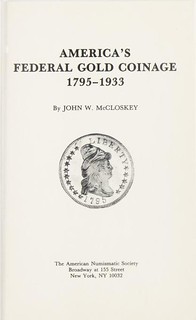 Coincident with the
Coinage of the Americas Conference (COAC) events held at the ANS in the 1980s and 1990s, the ANS produced a number of boxed sets that contained color slides along with pamphlets
incorporating introductory material and slide descriptions. The material illustrated a number of United States coin series and, in the era of the slide projector, was ideal for
meeting presentation purposes. Each set of slides and accompanying pamphlet illustrate and describe the major types and design evolution within an American series.
Coincident with the
Coinage of the Americas Conference (COAC) events held at the ANS in the 1980s and 1990s, the ANS produced a number of boxed sets that contained color slides along with pamphlets
incorporating introductory material and slide descriptions. The material illustrated a number of United States coin series and, in the era of the slide projector, was ideal for
meeting presentation purposes. Each set of slides and accompanying pamphlet illustrate and describe the major types and design evolution within an American series.
Newman Portal has digitized the slides and pamphlets for four of these, including America’s Copper Coinage 1783-1857 (1984), Massachusetts Silver Coinage (1994), Die Varieties of the 1794 Large Cent (1984), and America’s Federal Gold Coinage 1795-1933 (1989). Newman Portal acknowledges the ANS for permission to digitize this material. Can E-Sylum readers report the existence of any other sets?
Link to Massachusetts Silver Coinage on Newman Portal:
https://nnp.wustl.edu/library/book/554218
Link to Die Varieties of the 1794 Large Cent:
https://nnp.wustl.edu/library/book/554219
Link to America’s Copper Coinage:
https://nnp.wustl.edu/library/book/554217
Link to America’s Federal Gold Coinage:
https://nnp.wustl.edu/library/book/554220
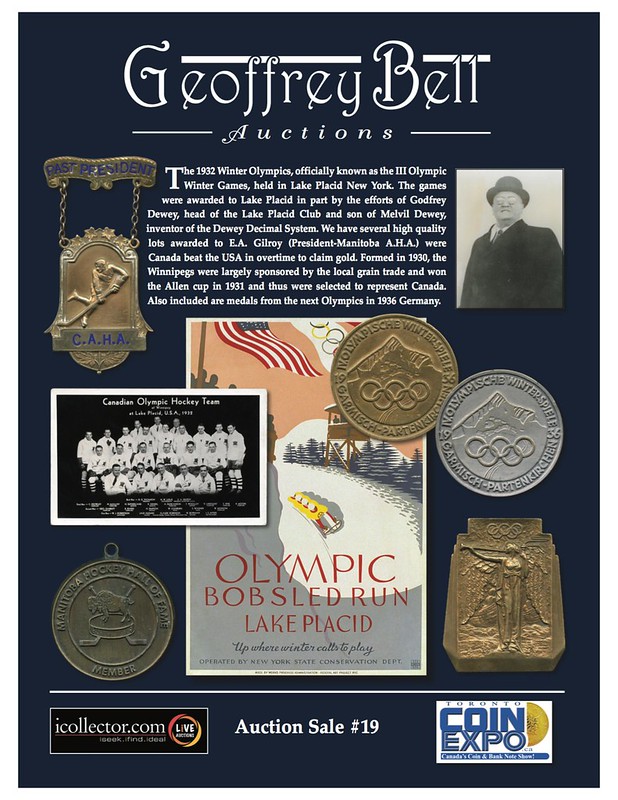
MORE ON THE SHERLOCK HOLMES SILVER MEDAL
Greg Ruby edits the Fourth Garrideb blog on the numismatics of Sherlock Holmes. Greg did some good detective work of his own using the Newman Numismatic Portal to find more information on a purported Holmes-related medal. But is that really what it is? -Editor
Back in September 2015, we published one of our first HolmeWork assignment about a possible 1890s silver medal with a scene from a Sherlock Holmes story. We reprinted a comment from the July 7, 2002 issue of The E-Sylum:
Christopher Eimer writes: “The ongoing correspondence in The E-Sylum relating to Sherlock Holmes, and in particular Alan Luedeking’s request for numismatic references in today’s issue, reminds me of a medal that I purchased many years ago, which is said to illustrate a scene from a SH mystery.
The medal is silver, uniface, and measures 95 mm. (3.75 inches) in diameter, and can be dated to c.1890-1900. It shows a landscape in which a policeman, accompanied by two other men (detectives?) run towards a lake, in the foreground, in which can be seen two men.
The manner of dress and the atmosphere conjured by the scene is certainly redolent of a Sherlock Holmes mystery, and I have never had reason to doubt the attribution. I had hoped that after all these years, I would by chance come across a print or book illustration relating to this medallic image, but that has not been the case.
However, the current correspondence in The E-Sylum raises the chance that this image may well come to be identified.
Correspondence with Mr. Eimer produced no results and having been an open question for nearly three years here, it looked unlikely we would have an answer.
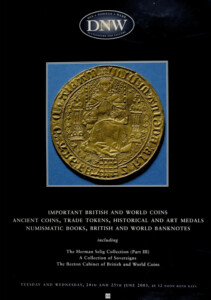
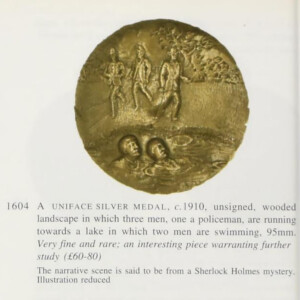
In reviewing items on the Newman Numismatic Portal recently, we have now located a picture of this medal. The auction firm of Dix Noonan Webb conducted an auction over June 24 and 25, 2003. Lot 1604 reads as follows:
A UNIFACE SILVER MEDAL, c. 1910, unsigned, wooded landscape in which three me, one a policeman, are running towards a lake in which two men are swimming. 95mm. Very fine and rare; an interesting piece warranting further study (£60-80)
The narrative scene is said to be from a Sherlock Holmes mystery.
So we have now identifed the medal. Is anyone out there able to place this scene depicted within a Sherlock Holmes story? Your editor has serious doubts that this medal ties into a Holmes mystery. What do you think?
OK, folks - now put on your thinking caps. Is there a plausible connection to Sherlock Holmes? If not, then what might the scene represent? -Editor
To read the complete article, see:
Update on HolmeWork Assignment: A Sherlock Holmes
Silver Medal from the 1890’s? (https://fourthgarrideb.com/2018/09/03/update-on-holmework-assignment-a-sherlock-holmes-silver-medal-from-the-1890s/)
To read the earlier E-Sylum article, see:
MORE SHERLOCKIANA (http://www.coinbooks.org/esylum_v05n28a11.html)
ANOTHER EVERMAN COUNTERSTAMP FOUND
Earlier this month Bill Groom told us about his discovery of a new EVERMAN counterstamp on a gold dollar. Now web site reader Nelson Clifton from the southern NJ/Philadelphia area now reports an EVERMAN stamp on a Seated Liberty dollar. -Editor

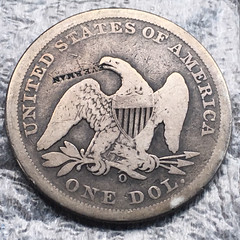
I’ve been reinvigorated in numismatics since July 4, 2015; resolved to finish my childhood Whitman push-in 1909-1940 Lincoln Cent folder, purchasing a 1914-D online. The impending year of 2016 whetted my love of history.
The hobby became a full-time endeavor by December, searching each day for coins and upgrading to Dansco albums. By springtime, 2017, I decided to complete my Buffalo Nickels plus all silver and clad coin albums 1916> and a Dansco #7070 US Type Set.
The last two coins to complete my type set were the types-3 and -4 Seated Liberty Dollars; although I purchased my 1871 T-4 last, that coin arrived earlier than the “EVERMAN” 1859-O. This counterstamped dollar is the final coin to complete my set.
As I waited (and prodded the seller, a bit late with both communication AND shipping), curiosity caused my investigating the EVERMAN mark, when I discovered your publication(s).
I hope this coin’s existence may help discerning exactly which culprit-EVERMAN shamelessly self-promoted himself upon our hobby, although I also must be thankful his deed(s) enabled me to procure a specimen at such a reduced cost; I’ve witnessed prices rising significantly on these dollars, against and upward of what PCGS & Red Book quote as market value in lower grades. I know the demand for type set coins has increased. My set includes all 5- or 6-types available for Seated Liberty coinage; winning auctions for all types, or finding ‘affordable’ no-drapery half-dollars, has become a confounding endeavor, believe me. In finding this dollar, I consider myself one very lucky collector, indeed.
Thanks. Nice coin. -Editor
To read the earlier E-Sylum article, see:
NEW EVERMAN COUNTERSTAMP DISCOVERED (http://www.coinbooks.org/v21/esylum_v21n35a27.html)
NOTES FROM E-SYLUM READERS: SEPTEMBER 16, 2018
Dave Bowers on The E-Sylum's Anniversary
Regarding the 20th anniversary of our first issue, Dave Bowers writes:
I join others in congratulating you. I think The E-Sylum was the pioneer in on-line comprehensive journalism of the passing numismatic scene. Always diverse, always interesting, something for everyone.
To read the earlier E-Sylum article, see:
READER THOUGHTS ON OUR 20TH ANNIVERSARY (http://www.coinbooks.org/v21/esylum_v21n36a02.html)
Leatherbound French Catalogs
Jan Valentine is compiling a census of leatherbound copies of the B. Max mehl sale of the French large cent collection. -Editor
Dan Hamelberg writes:
I have a leather bound French catalog with the name "H. A. Sternberg" printed on the front cover. I also have a proof copy of the French Sale, and a copy of Clapps annotated copy of the French sale that was one of three copies made by John Burns from the original in the Carnegie Library.
Jim Neiswinter writes:
I have Max Mehl's own copy in full leather. It does not have his name on the front, but it did come in a half-leather book box. There is a written notation by Mehl on the first page - "TOTAL - $48,137". I got it from a George Kolbe Sale in Oct. 1996.
Attached is a photo, taken last year, of Jan Valentine standing in front of 1128 Spruce St. in Philadelphia - Home of S. H. Chapman.
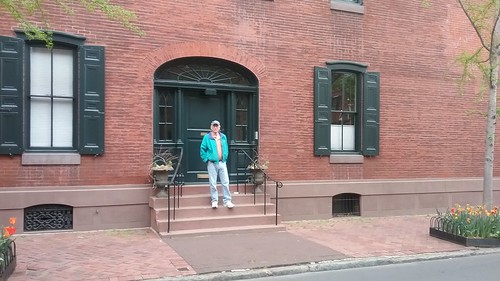
To read the earlier E-Sylum article, see:
NOTES FROM E-SYLUM READERS: SEPTEMBER 9, 2018 : Leatherbound French Catalogs Sought
(http://www.coinbooks.org/v21/esylum_v21n36a08.html)
Brunk Countermark Book Update Ideas
B.J. Herbison writes:
After reading the suggestion for placing Brunk in wiki format I realized it could be combined with an existing site. This would give it a bigger support base. Some
possibilities include Numista, Currency Wiki, Coin Facts.
https://en.numista.com/index.php
https://currencies.wikia.com/wiki/Main_Page
http://www.coinfactswiki.com/wiki/Main_Page
All fine sites. It does help to have an organization behind a Wiki project to recruit and oversee the contributors. I'll continue working with Bill Groom, TAMS and others to see what might be done to bring the book project to fruition in one form or another. -Editor
To read the earlier E-Sylum articles, see:
BRUNK MERCHANT COUNTERMARKS PUBLISHER SOUGHT (http://www.coinbooks.org/v21/esylum_v21n35a08.html)
NOTES FROM E-SYLUM READERS: SEPTEMBER 9, 2018 : Counterstamps and Chopmarks
(http://www.coinbooks.org/v21/esylum_v21n36a08.html)
On Provenance and Pedigree
Regarding last week's Vocabulary article from Dick Johnson, Jeff Rock of San Diego writes:
Of course, the Brits will tell you that "pedigree" refers only to the lineage of horses and dogs, while "provenance" is the ownership chain for a collectible!
"Pedigree" is seen quite often in numismatic circles, at least here in the U.S. I generally prefer "provenance" myself, so I'll side with the Brits. But a dictionary must record all common term usages. English is a flexible and constantly changing language. -Editor
To read the earlier E-Sylum article, see:
VOCABULARY TERMS: PEDIGREE, PROVENANCE (http://www.coinbooks.org/v21/esylum_v21n36a15.html)
Mumford's Money in Early Maryland Book Sought
Paul Stolzer writes:
Several weeks ago you published a very interesting article on Willard Mumford and a book he wrote called Barter, Bits, Bills & Tobacco: The Story of Money in Early Maryland.
I would love to get access to a copy of that book. I have checked my usual internet sites and have had no luck. Do you have any suggestions as to how I might get access to a copy?
I'm afraid I don't. Can any of our readers help? -Editor
To read the earlier E-Sylum article, see:
WILLARD ROYAL MUMFORD (1933-2018) (http://www.coinbooks.org/v21/esylum_v21n27a08.html)
On the Yukon Coin Find
Ken Berger writes:
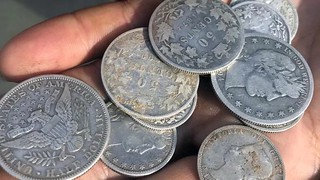 Regarding the cache of coins found in
the Yukon: My great grandfather (Julius Roland) was of French-Canadian descent and was one of the leaders of the Roland-Hildebrand Expedition to the Yukon in 1898 in search of
gold. So, I am almost sure that the found coins were left behind by him & therefore should be given to me. :-)
Regarding the cache of coins found in
the Yukon: My great grandfather (Julius Roland) was of French-Canadian descent and was one of the leaders of the Roland-Hildebrand Expedition to the Yukon in 1898 in search of
gold. So, I am almost sure that the found coins were left behind by him & therefore should be given to me. :-)
Good luck with that! -Editor
To read the earlier E-Sylum article, see:
CANADIAN AND U.S. COIN CACHE FOUND IN YUKON (http://www.coinbooks.org/v21/esylum_v21n36a30.html)

FOLLOW-UP: HOLED COINS AS SLAVE CHARMS
Earlier this year Abigail Cooper, Assistant Professor of History at Brandeis University reached out to E-Sylum readers for information on holed coins as slave charms. She provided this follow-up. -Editor
I just wanted to express my appreciation to you and to your readers for their insights back in June. I'm revising the section on currency and folk beliefs now, and the printouts of your newsletter are good company.
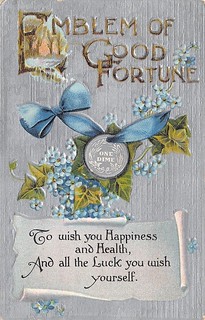 I have only been
able to find "Emblem of Good Fortune" postcards on ebay from the 20th century, which is still useful, but should anyone come across such evidence of market-produced
gifts of dimes for good luck, I would be eager to see them.
I have only been
able to find "Emblem of Good Fortune" postcards on ebay from the 20th century, which is still useful, but should anyone come across such evidence of market-produced
gifts of dimes for good luck, I would be eager to see them.
For whatever it is worth, slaves did indeed have access to coined money, even as slaves, as many were allowed to sell items they grew in their own gardens at market on days off and/or "hired out" (the owner leased their labor) to someone else and were in some cases permitted to keep some of what they earned. It's interesting. Slave owners were often using their slaves as collateral and didn't have cash on hand so had to get loans from their slaves to buy goods, pay debts, etc.
Christmas time was known as a year-end celebration because (as it followed the harvest) owners were able to give the "gift" of paying back the loaned money they borrowed from their slaves. Of course, there were plenty of enslaved people who never did have any reason to handle money, but they likely knew someone who did.
In a time as thrilling and frightening as wartime emancipation (and in a South where Confederate currency became increasingly worthless), I am grappling with how freed people evaluated the value of a dime as a good luck charm and/or/versus as a piece of silver currency.
I did also see the Davidson article but truly appreciated the precise interaction your readers demonstrated, and all I have on archaeological studies on dimes and African American communities is from Davidson and the McBrides in Kentucky, so if any other digs cross your desk, keep me posted, please. Again, thanks to you and your readers for the attention, interest, and insights.
We're glad to be able to help. This is a fascinating topic that most of us in the numismatic field were unaware of. See the earlier articles for more information, and keep your eyes peeled for new citations and datapoints. -Editor
To read the earlier E-Sylum articles, see:
HOLED COINS AS SLAVE CHARMS (http://www.coinbooks.org/v21/esylum_v21n20a15.html)
MORE ON HOLED COINS AS SLAVE CHARMS (http://www.coinbooks.org/v21/esylum_v21n21a14.html)
HEATON'S MONOGRAPH ON MINT MARKS
Numismatic bibliophiles will appreciate Dave Bowers' September 12, 2018 article in the Mint News Blog about the rise of mint mark collecting, which was fueled by the publication of a book. -Editor
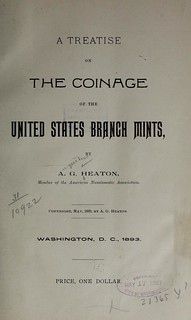 As hard as it may be to envision
today, no one cared if a coin had a CC, S, or some other letter. Mint-marked issues that are considered great rarities today—the 1854-S $2.50 and $5 for example—were worth no more
than a Philadelphia Mint coin, and an 1870-S Liberty Seated dollar had no extra value.
As hard as it may be to envision
today, no one cared if a coin had a CC, S, or some other letter. Mint-marked issues that are considered great rarities today—the 1854-S $2.50 and $5 for example—were worth no more
than a Philadelphia Mint coin, and an 1870-S Liberty Seated dollar had no extra value.
That changed in 1893 when Augustus G. Heaton published his landmark monograph, A Treatise on the Coinage of United States Branch Mints, for sale for just a dollar.
His 1893 monograph listed 17 “causes of attractiveness”—interesting to review today:
First. Mint Marks in their progressive issue at New Orleans, Dahlonega, Charlotte, San Francisco, and Carson City show the direction of our country’s growth and its development of mineral wealth.
Second. Mint Marks in their amount of issue in varied years at different points offer the monetary pulse of our country to the student of finance.
Third. The denominations of any one Branch Mint, in their irregular coinage and their relation to each other at certain periods, indicate curiously the particular needs of the given section of the land.
Fourth. A knowledge of the Branch Mint coinage is indispensable to an understanding of the greater or less coinage of the Philadelphia Mint and its consequent numismatic value.
Fifth. A knowledge of the coinage of the different Branch Mints gives to many usually considered common dates great rarity if certain Mint Marks are upon them.
Sixth. Mint-Mark study gives nicety of taste and makes a mixed set of pieces unendurable.
Seventh. Several dies were used at Branch Mints which never served in the Philadelphia coinage, and their impressions should no longer be collected as mere varieties.
Eighth. The very irregularity of dates in some denominations of Branch Mint issues is a pleasant exercise of memory and numismatic knowledge.
Ninth. This irregularity in date, and in the distribution of coinage, gives a collection in most cases but two or three, and rarely three or more contemporaneous pieces, and thus occasions no great expense.
10th. As the Branch Mints are so far apart their issues have the character of those of different nations, and tend to promote correspondence and exchange, both to secure common dates in fine condition and the rarities of each.
11th. The United States coinage has a unique interest in this production at places far apart of pieces of the same value and design with distinguishing letters upon them.
12th. As Mint Marks only occur in silver and gold coins they can be found oftener than coins of the baser metals in fine condition, and neither augment or involve a collection of the minor pieces.
13th. As Mint Marks have not heretofore been sought, or studied as they deserve, many varieties yet await in circulation the good fortune of collectors who cannot buy freely of coins more in demand, and who, in having access to large sums of money, may draw therefrom prizes impossible to seekers after older dates.
14th. The various sizes of the mint marks O, S, D, C, and CC, ranging from the capital letters of average book type to infinitesimal spots on the coin, as well as the varied location of these letters, defy any accusation of monotony, and are far more distinguishable than the characteristics of many classified varieties of old cents and ‘colonials.’
15th. Mint Marks include noble enough game for the most advanced coin hunter, as their rarities are among the highest in value of United States coinage, and their varieties permit the gathering in some issues of as many as six different modern pieces of the same date.
16th. The face value of all the silver Mint Marks to 1893, being less than one hundred and fifty dollars, they are within the means of any collector, as aside from the economy of those found in circulation, the premiums for rarities are yet below those on may coins of far inferior intrinsic worth.
17th. As the new Mint at Philadelphia will have a capacity equal to all existing United States Mints, it is probable that others will be greatly restricted or even abolished in no long time, and that Mint Marks will not only cease as an annual expense, but be a treasure in time to those who have the foresight to collect them now.
To read Heaton's Monograph on the Newman Portal, see:
https://nnp.wustl.edu/library/book/512404
To read the complete article, see:
Bowers on collecting: The rise of mint mark collecting
(http://mintnewsblog.com/bowers-on-collecting-the-rise-of-mintmark-collecting/)
VOCABULARY TERMS: COPIES & REPLICAS
Dick Johnson submitted these entries from his Encyclopedia of Coin and Medal Terminology. Thanks! As always, Dick's submissions are hugely informative - a real education for numismatists of all experience levels. -Editor
For this and the next three weeks we will explain the terms of copies. There are 13 different kinds. You will find their entries define the term and how they differ. First a list of all 13, then an overview of all this week.
KINDS OF COPIES:
Deluxe Copy – Made with authority for sale to the recipient only in better materials or workmanship than the original (as a decoration prepared in more precious metal—it was issued in silver, but the recipient may order it made in gold at his own expense).
Custom copy. -- Made with authority for sale as a second or replacement copy (say for a second uniform ) or to replace a lost original, or other official use. Called replacement medal or sometimes jeweler’s copy.
Reissue – Copy made with authority after lapse of time without change from original issue and reuse of original dies to strike a new piece or a new production run.
Revision – Copy made with authority and with a change of design no matter how minute, requiring retooling the original dies or creating entirely new copy dies. Such change might be a new date, new logo, change of sponsor’s name, correct a design error, or similar reason.
Replica – Made with authority where a major portion of the previous design is used to make a new coin or medal. REPLICATION is the most common form of copy making. No unauthorized use here, and new dies or molds are used to make the new issue.
Collectors’ Copy – Made with authority for sales primarily to collectors or public; these copies are usually electrotypes (as copies sold by museums of specimens in their collections).
Reproduction – Made without authority and reproduced in a new model or composition. A large gray area of legality.
Facsimile – Copy without authority, closely resembling the original and made by any method, as costume jewelry medals.
Private Copy – Made without authority for private use; these copies are usually cast in plaster or metal and if sold may be questionable status (study copies) cast in plaster for scientific or scholarly study are certainly legal; private metal copies in off metal are a gray area, but copies the same as the original are outright forgeries).
Imitation – Copy made without authority and technically not illegal; usually of poor quality, or a souvenir status (to be given away), or play money (as child’s play copies, or play coins).
Restrike – Copy made without authority from original dies at a later date (and often in deteriorated state, as struck from cracked or rusted dies).
Forgery – Copy made without authority and with intent to deceive.
Counterfeit – Copy made without authority and with intent to deceive and defraud both collectors and the public. Fake and spurious also denote a counterfeit status.
Copies and Replicas. Not the original medallic or numismatic item, but a similar specimen. A wide variety of copies and replicas exist, both authorized and surreptitious, for which a large terminology has developed, including those terms listed here. Copy is a broad term that includes all items not the original; replica, likewise broad, includes all similar items to the original. The terms differ in that copy implies a closer resemblance to the original, replica may be more liberal in its exact replication.
The following criteria determine the precise term: (1) does authorization, approval or legality exist?, (2) intent of maker of the copy? (3) quality of workmanship? (4) use of original or new dies or molds? (5) how is the copy made – cast, struck, electrotype, or other?, and (6) any other diagnostic evidence?
Copies sometimes take on a life of their own and often become a collectible of their own. Examples: t he Paduan copies of ancient coins, the Bashlow replicas of the U.S. Confederate Cent, the British Museum electrotypes, Bolen and Gallery Mint copies of early American coins, Becker counterfeits. These are all copies, desired by collectors, and infrequently more costly than the originals!
Copies Are Not The Original. All these terms have one thing in common: the objects are not the ORIGINAL, the first to be made and issued under authority. Another term, a CONTEMPORARY copy, indicates the time when the replica was made – during the original issuing period (or sometimes during the lifespan of the artist).
Contemporary copies of coins are, of course, counterfeits; however a thin line of legality exists if the coin has been demonetized; its counterfeits are subject to numismatic and scholarly study. But counterfeits of ancient coins, made contemporary to their original issue, are now historical objects and legal to own. Replicas of ancient coins made centuries later are forgeries as their maker’s intent was to deceive subsequent buyers and collectors.
Cast medals. Cast medals are always suspect of being copies. Because of the ease of reproducing cast specimens it is important data to know the exact diameter of the artist’s original mold, or his first casting. Other casts can be made from this original – or subsequent – casts. The term for this is called a generation. In the process of casting, metal shrinks slightly when it cools, each succeeding generation is one to four percent less diameter from the preceding generation. See AFTER-CAST, SHRINKAGE.
Novodel. Replicas of older issues of coins, made at the same mint but struck from copy dies are called novodels. The word is derived from the Russian term where mints in Tsarist times made struck copies of early coins and medals as an accommodation for wealthy collectors. It may be a highly technical distinction but if the dies were made from the original hubs we would class this as a reissue; if these were made from copy dies – as we suspect – they would be classed as a revision (see above).
Coin copies. The replication of coins is always suspect; the replication of medals is not always so. We know of museum curators learning of an organization giving an award medal, contacting the organization for permission for a duplicate to be made for the museum’s archives. Most of the time this permission was granted and the medal – made by the same manufacturer – ended up in their collections. (Technically this is a custom copy.)
German numismatists use the word abschlag for similar restruck items. Coins normally struck in silver, but RESTRUCK from original dies but in gold for presentation purposes are called abschlag. In the above list of terms, an instance of this would be called a deluxe copy.
Test for Authentication. Each suspected copy or replica must stand various tests for authentication. The first such test is for an experienced numismatist to
compare the suspect item with a known original specimen. Other than weighing and measuring a specimen, tests employ scientific equipment must be made. The rising need of
AUTHENTICATION, AUTHENTICATION SERVICE and LABORATORY TESTING gives testimony for proving the original status of any given item.
CLASS 11.9
Next week: The four "REs" -- Reissue, Revision, Replica, and Reproduction. Look for it.
Looking for the meaning of a numismatic word, or the description of a term? Try the Newman Numismatic Portal's Numismatic Dictionary at: https://nnp.wustl.edu/library/dictionary
Or if you would like a printed copy of the complete Encyclopedia, it is available. There are 1,854 terms, on 678 pages, in The Encyclopedia of Coin and Medal Technology. Even running two a week would require more than 19 years to publish them all. If you would like an advance draft of this vital reference work it may be obtained from the author for your check of $50 sent postpaid. Dick Johnson, 139 Thompson Drive, Torrington, CT 06790.

WILLIAM IDLER, SR. (1808-1901)
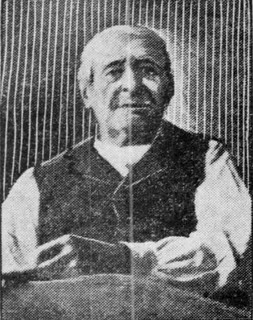 William Idler, Sr. (1808-1901), was
born on June 25, 1808, son of Jacob Idler (1773-1856), a wealthy importer and shipping magnate and merchant, and Sophie Idler (1781-1869), at his father's home on Bread
Street, Philadelphia, Pennsylvania. His father Jacob funded the Venezuelan Government from 1821 to 1825 with $252,814 for ships, arms, ammunition, and supplies. Attempting to
demand payment on the loan he was imprisoned at Caracas for six years. Jacob Idler became close friends with Simon Bolivar and five wax busts of the General were kept in the Idler
home at Philadelphia.
William Idler, Sr. (1808-1901), was
born on June 25, 1808, son of Jacob Idler (1773-1856), a wealthy importer and shipping magnate and merchant, and Sophie Idler (1781-1869), at his father's home on Bread
Street, Philadelphia, Pennsylvania. His father Jacob funded the Venezuelan Government from 1821 to 1825 with $252,814 for ships, arms, ammunition, and supplies. Attempting to
demand payment on the loan he was imprisoned at Caracas for six years. Jacob Idler became close friends with Simon Bolivar and five wax busts of the General were kept in the Idler
home at Philadelphia.
Idler is best known as a jeweler, and coin and stamp dealer in Philadelphia who issued a variety of 33 store cards struck in a variety of metals by Robert Lovett, Jr., several engraved as replicas of rare colonials.
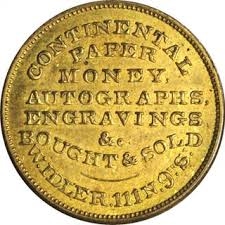 In 1848, he married Rosanna Kelly
(1821-1897), daughter of Robert and Mary Kelly (1791-1868). They had two sons : William Kelly Idler, Jr. (1849-1916), and Robert Kelly Idler. William continued his father's
business after his demise. Robert became the Real Estate Assessor of Philadelphia.
In 1848, he married Rosanna Kelly
(1821-1897), daughter of Robert and Mary Kelly (1791-1868). They had two sons : William Kelly Idler, Jr. (1849-1916), and Robert Kelly Idler. William continued his father's
business after his demise. Robert became the Real Estate Assessor of Philadelphia.
In 1849, news broke out of gold discovered at Gold Hill, Rowan County, North Carolina. Idler and his father had land three counties west of the discovery site in Rutherford County and planned to mine in search of gold by the name of Philadelphia and North Carolina Mining and Smelting Company, but the enterprise failed. The Promissory Notes signed by William P. Small and Reuben Hanse of Rutherford County, North Carolina, were declared fraudulent since the land and its value and condition did not match Idler's claim. William P. Small and Reuben Hanse published a public notice in the Public Ledger, Wednesday, March 13, 1850, page 1, declaring they would not pay on the notes due to the fraud.
Beginning about 1856 his shop was located at 111 North Ninth Street, Philadelphia, PA. His shop turned into a Curiosity Shop selling not only watches, and jewelry, but also, tortoiseshell combs, stationery, fans, antiques, engravings, curios and novelties, rare books, fancy articles, minerals, shells, medals, tokens, postage stamps, and United States Coins, paper money, and autographs.
Idler as well as many collectors and dealers used to buy coins at the U. S. Mint at face and a slight premium over face.
In 1859 he published : Catalogue of Coins, Medals, Tokens, Continental Money, Autographs, Geological and Mineral Specimens, Antiques, Old Books, etc., Bought and Sold For Sale by William Idler. This catalog is not listed in Attinelli.
He either caused the 1804 Class III Silver Dollars to be re-struck or else obtained several, which he sold for $75 each. From one of these he produced electrotypes as he also had done for several different Colonial pieces.
He ran his first paid ad in Mason’s Magazine in June, 1867.
His daughter Rose A. Idler married John W. Haseltine on June 9, 1869, at the Clinton Street Presbyterian Church.
His coin collection was sold by his son-in-law John White Haseltine forming part of his first two coin auction sales on April 12, 1870 at Thomas Birch & Son, Philadelphia, and December 21, 1870, at Leavitt, Strebeigh & Company, New York.
In 1882, Idler attempted to sue the Venezuelan Government for repayment of his father's loan.
In February 1901 George Heath announced the 93 year-old was still enjoying good health. He died five months later on Tuesday, July 16, 1901, at 9 AM. He is buried at Woodlands Cemetery, Philadelphia, Pennsylvania. His estate was valued at $32,000.
To read the complete article, see:
IDLER, WILLIAM
(https://sites.google.com/a/numismaticmall.com/www/numismaticmall-com/idler-william)
The entire inventory of the Lupia Numismatic Library is for sale. Individual items will be available before the remaining archives are broken up into parcels sold at philatelic auctions in the U. S. and Hong Kong. Check NumismaticMall.com frequently as dozens of new items with estimates will be posted daily until everything is sold.
All inquiries will be given prompt and courteous attention. Write to: john@numismaticmall.com .
INTERVIEW: NUMISMATIC BOOKSELLERS KOLBE & FANNING
Joshua McMorrow-Hernandez of Coin Dealer Newsletter interviewed numismatic bookellers Kolbe & Fanning at last month's ANA show - check out the video. -Editor
 George Kolbe and David
Fanning are perhaps the most dynamic of duos in the numismatic literary world, and they manned an expansive booth at the ANA World’s Fair of Money last month in Philadelphia. Of
course, we at CDN Publishing were there, too, and throughout the days of the event, I went out to interview several dealers and other numismatic luminaries at the ANA show.
George Kolbe and David
Fanning are perhaps the most dynamic of duos in the numismatic literary world, and they manned an expansive booth at the ANA World’s Fair of Money last month in Philadelphia. Of
course, we at CDN Publishing were there, too, and throughout the days of the event, I went out to interview several dealers and other numismatic luminaries at the ANA show.
I simply couldn’t pass up the opportunity to talk with Kolbe and Fanning, who I’ve talked with in the past and have learned much from through our conversations. I threw the mic over to them both for a lively chat about the cool items that turned up at their booth, some thoughts on the where the numismatic literature market is today (hint – looks like things are heating up in several genres!), and what a new literature collector can do to gain a foothold in the hobby of studying and purchasing vintage coin books and other related publications.
Just as I expected, Kolbe and Fanning informed and entertained with their market observations, hobby insight, and wisdom for new and seasoned collectors alike. The four-minute interview below is definitely worth checking out, especially if you want to hear what cool 19th-century books ventured into their booth at the show or what types of numismatic books are heating up right now in the marketplace!
To watch the complete video, see:
Kolbe & Fanning Dish About The Philly ANA Show, Hot
Numismatic Literature & Cool Finds (http://blog.greysheet.com/kolbe-fanning-dish-about-the-philly-ana-show-hot-numismatic-literature-cool-finds/)
COINAGE ARTICLE INTERVIEWS JOHN FEIGENBAUM
I also wanted to point out another excellent interview Josh McMorrow-Hernandez did for COINage magazine with John Feigenbaum. Here's an excerpt from the intro - be sure to see the complete version online. -Editor
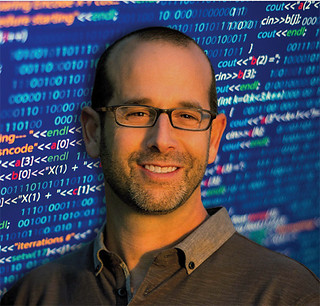 Feigenbaum developed software pricing platforms and
cataloging for coins in the 1990s and 2000s with the development of coin tracking technology at his Virginia firm David Lawrence Rare Coins, later followed by CoinPlex (now CDN
Exchange), Greysheet.com, and the CDN pricing app for mobile devices.
Feigenbaum developed software pricing platforms and
cataloging for coins in the 1990s and 2000s with the development of coin tracking technology at his Virginia firm David Lawrence Rare Coins, later followed by CoinPlex (now CDN
Exchange), Greysheet.com, and the CDN pricing app for mobile devices.
CDN Publishing publishes the long-running Coin Dealer Newsletter, the iconic price guide widely dubbed the “Greysheet.” In 2015, the company was acquired by Feigenbaum, a man who has long been known by many in numismatic circles. Feigenbaum rose to prominence in the 1990s and 2000s when he helped his father, David Lawrence Feigenbaum, turn what was a relatively small coin business into a well-known industry dealer.
Though the elder Feigenbaum passed away in May 2002, John continued building David Lawrence Rare Coins into a major coin business and, eventually, handled some of the rarest, most valuable coins known. In this interview we learn how John Feigenbaum turned his passions for coins, marketing, publishing, and technology into a colorful career.
To read the complete article, see:
John Feigenbaum: The Bill Gates of Coins
(http://coinagemag.com/john-feigenbaum-the-gill-gates-of-coins/)

AMERICAN COIN USE IN PANAMA IN 1849
Jack Topping published a nicely done story about his fourth great grandfather William J. Topping's use of American coins in Panama, based on Topping’s letter written December 15, 1849. Here's an excerpt. -Editor
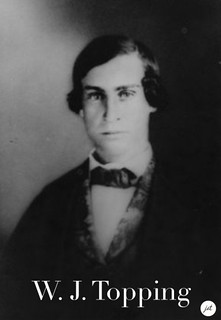 He points out how the Panamanian people
were thrilled with and preferred American coins and currency over Spanish currency. “The natives are very friendly. They would lay down mats in the huts and charge you a dime for
lodging and furnish you with hot coffee for a half a dime a cup” he wrote. He further pointed out, “Dimes and half dimes are their favorite coin and they will take it in
preference to a Spanish shilling. I can readily believe that there are more dimes in circulation on the Istmuth than there is in the City of New York.”
He points out how the Panamanian people
were thrilled with and preferred American coins and currency over Spanish currency. “The natives are very friendly. They would lay down mats in the huts and charge you a dime for
lodging and furnish you with hot coffee for a half a dime a cup” he wrote. He further pointed out, “Dimes and half dimes are their favorite coin and they will take it in
preference to a Spanish shilling. I can readily believe that there are more dimes in circulation on the Istmuth than there is in the City of New York.”
Although he never specified the particular variety or dates of the coins he carried, it is most likely he had different denominations of the U.S. Seated Liberty coins, such as Seated Liberty half dimes ($0.05), Seated Liberty dimes ($0.10), Seated Liberty quarters ($0.25), Seated Liberty half dollars ($0.50), and Seated Liberty dollars ($1.00). As for the Spanish shilling William mentioned, he most likely was referencing the Spanish real, a type of silver coin very popular in North and Central America, including the United States. Up until the Coinage Act of 1857 went into effect, foreign coins such as the Spanish real (commonly called the Spanish “pillar dollar”) or Mexican issued currency were considered legal tender in the United States.
It is possible the native Panamanian population preferred American coins due to the fineness and weight of the silver content over Spanish coinage. According to William, the Panamanian hosts even preferred American gold Eagles over other gold coins, and traded them for other American coins, saying, “They exchange American gold here at what they call 10 per cent. They will give you 11 dollars for an Eagle at the rate of eight dimes to the dollar and that is the best you can do.”
To read the complete article, see:
RUSHING THROUGH PANAMA: THE STORY OF WILLIAM J. TOPPING
(https://jetnumismatics.com/2018/09/10/rushing-through-panama-the-story-of-william-j-topping/)
MORE ON COINS IN ICELAND AND BRAZIL
Readers have these follow-ups on items last week about coins in use in Iceland and Museum coin collections in Brazil. Also, links to new releases from the Perth Mint in Australia. -Editor
Coin Circulation in Iceland
Ultramodern numismatist Pabitra Saha writes:
"It is not indicated if coins are found in circulation. 3-4 years back, the Central Bank of Iceland indicated plans to introduce new higher value circulation coins. Nothing further has been heard since.
"I assume that with inflation, the circulation coins must have vanished as too small for daily transaction"
Tom Babinszki responds:
Coins are still used in Iceland. I was actually surprised, because we had no need to use anything other than a credit card, though we still exchanged some money to grow the collection and to hear some local jingle in our pockets. In many stores you can still hear people using coins, actually more than in some other countries.
Today the value of the USD is about 113 Icelandic Kronur, when we were there in July it was around 109. Still, the following coins can be found in circulation: 1, 5, 10, 50 and 100 Kronur.
The last year Icelandic Krona was minted was in 2011. This currency has been in use since 1981, when the old Krona was replaced by the new Krona, converting in a 100 to 1 ratio.
The banknotes which are used are 500, 1000, 5000 and 10000 Krona. There are 2000 notes still in circulation, but I believe they are rare.
To read the earlier E-Sylum article, see:
THE NUMISMATIC MUSEUM OF ICELAND (http://www.coinbooks.org/v21/esylum_v21n36a19.html)
Brazil's Numismatic Collection
In answer to a reader question about the fire at Brazil's National Museum, I wrote that a natural history museum, I wouldn't expect it to have held numismatic content. -Editor
Alberto Gustavo Paashaus Junior of Brazil reports:
Hopefully, if we can say so in such shamefull episode, there were not any Numismatic losses in the fire that consumed our National Museum.
That institution was devoted to Natural Sciences, Archeology and Paleontology. Numismatic holdings are under guard of the Museu Histórico Nacional, another institution which suffers from lack of care and financial resources from our previous and current Governments.
To read the earlier E-Sylum article, see:
BRAZIL'S NATIONAL MUSEUM BURNS (http://www.coinbooks.org/v21/esylum_v21n36a20.html)
Perth Mint Productions
Last week I highlighted a couple pricey but interesting new products from the Perth Mint in Australia. I had trouble locating the product pages on their web site, but Kiara Canavate of their marketing department helped me out. -Editor
For more information on the coins, see:
Rare Earth (https://www.perthmint.com/catalogue/rare-earth.aspx)
Rare Earth 2018 5oz Silver High Relief Patina Coin
(https://www.perthmint.com/catalogue/coins-australia-argyle-rare-earth-2018-5oz-silver-high-relief-patina-coin.aspx)
With original artistry inspired by ancient forces that gave us brilliant treasures, the Rare Earth coin has been crafted from 5oz of pure silver and a natural golden diamond.
Aged at 1.6 billion years, the handset jewel from the Argyle Diamond Mine in Western Australia’s spectacular Kimberley region represents the epicentre of a supernova.
Discovery (https://www.perthmint.com/discovery.aspx)
The Perth Mint is proud to present Discovery – a unique masterpiece with a world mintage of only 1.
This extraordinary one-of-a-kind collectable celebrates the discoveries in Australia of two of the world’s most treasured natural riches, gold and pink diamonds.
Well, Christmas is coming... -Editor
To read the earlier E-Sylum articles, see:
THE PERTH MINT RARE EARTH COIN (http://www.coinbooks.org/v21/esylum_v21n36a34.html)
DISCOVERY: AUSTRALIA MINTS HOLEY DOLLAR TRIBUTE (http://www.coinbooks.org/v21/esylum_v21n36a33.html)
MINTING YOUR OWN COINS FROM SCRATCH
The How to Make Everything guy reminds us why we pay people to make stuff for us - so we don't have to. None of this is easy. In this video he tries his hand at making coins the old fashioned way. "After extracting my own silver, I now attempt to recreate a couple different ways coins were first made." -Editor
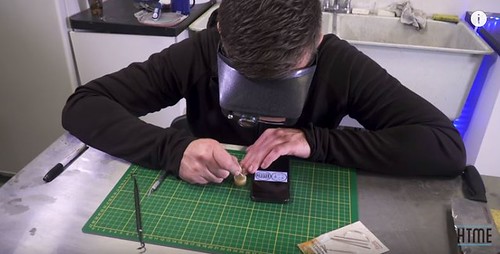

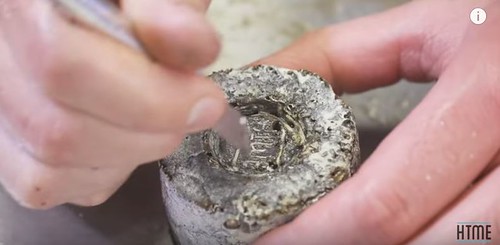
To watch the complete article, see:
Minting My Own Currency (https://www.youtube.com/watch?v=FvKotETzOFg)
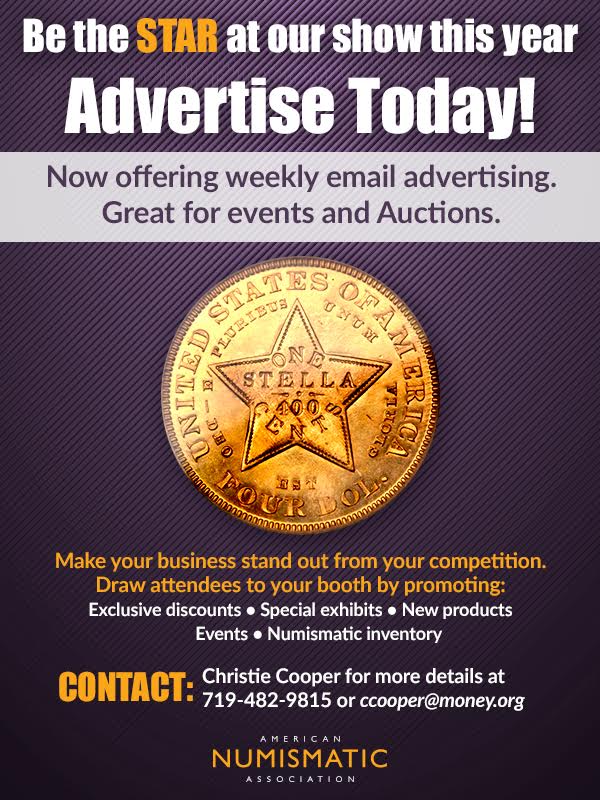
THE COINAGE OF SPARTA
Mike Markowitz authored an article September 12, 2018 for Coinweek on the rare coinage of Sparta. Here's an excerpt. Be sure to read the complete version online - there's much more information on this fascinating ancient city. -Editor
Hundreds of different Greek cities issued coins between the birth of coined money around 650 BCE and the end of Greek civic coinage some time after 300 CE. The apparent exception was Sparta.
Many serious collectors of ancients have never seen Spartan coins. Some believe Sparta struck no coins at all. As usual in Classical Numismatics, however, there is a “Yes, but...” lurking in the weeds. Sparta issued Spartan coins, in small quantities, well after it had ceased to be a major power in the affairs of the Greek world.
Among themselves, Spartans might use awkward bundles of iron spits for legal or ceremonial transactions, but in dealings with other Greeks they had to use current money.
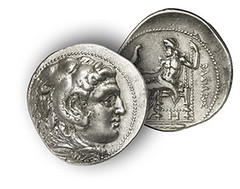 Areus, a member of the
Agiad dynasty who ruled from 309 to 265 BCE, was the first Spartan king to issue coins in his own name. This break with tradition was driven by the need to pay mercenaries in his
war against Macedonia, Sparta no longer having the manpower to raise a citizen army. Ironically, Areus’s silver tetradrachm was closely modeled on the widely circulating
Macedonian coinage of Alexander, with the head of Herakles on the obverse and an image of Zeus enthroned holding an eagle on the reverse. Only the inscription “King Areus”
indicates the source. Just four examples of this remarkable coin are known, three in museums.
Areus, a member of the
Agiad dynasty who ruled from 309 to 265 BCE, was the first Spartan king to issue coins in his own name. This break with tradition was driven by the need to pay mercenaries in his
war against Macedonia, Sparta no longer having the manpower to raise a citizen army. Ironically, Areus’s silver tetradrachm was closely modeled on the widely circulating
Macedonian coinage of Alexander, with the head of Herakles on the obverse and an image of Zeus enthroned holding an eagle on the reverse. Only the inscription “King Areus”
indicates the source. Just four examples of this remarkable coin are known, three in museums.
To read the complete article, see:
Ancient Coins: What about Spartan coins ? (https://coinweek.com/featured-news/ancient-spartan-coins/)
ROMAN IMPERIAL GOLD HOARD FOUND IN ITALY
I guess I missed a chance to scoop a big numismatic story. Last Sunday Larry Dziubek forwarded a story written in Italian about a cache of gold coins found while renovating a theater in Italy. I was running behind and decided to wait for an English version. I don't like to highlight stories if they don't provide some numismatic details. Well, this story ended up spreading like wildfire once it got into the media in English. Several alert readers forwarded the story to me throughout the week. Here are links and an excerpt from one of them. -Editor
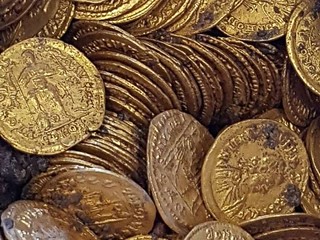 Hundreds of gold coins dating from
Rome's late Imperial era, the 4th or 5th century, were found Friday at a dig in Como, Italy, according to the Italian Ministry of Culture.
Hundreds of gold coins dating from
Rome's late Imperial era, the 4th or 5th century, were found Friday at a dig in Como, Italy, according to the Italian Ministry of Culture.
The ministry shared photos of the shiny coins, which were spilling out of an amphora -- a Roman jar with two handles -- buried in the dirt.
The discovery was made at a dig taking place at Teatro Cressoni, a theater in Como that shut down in 1997 and has since been demolished. The Ministry of Culture said the excavation was being carried out within the "restructuring" of the theater.
It's unclear how much the hundreds of coins could be worth.
Como is in northern Italy, on the border with Switzerland, and about an hour north of Milan and a four-hour train ride from Rome.
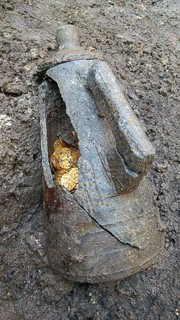
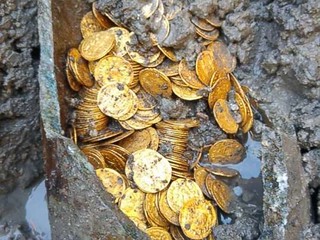
To read the complete article, see:
Hundreds of gold coins dating to Rome's Imperial era found
in Italy (https://abcnews.go.com/International/hundreds-gold-coins-dating-romes-imperial-era-found/story?id=57720521)
Thanks to readers Anne E. Bentley, Jim Contursi, Larry Dziubek, Gosia Fort, David Gladfelter, John Lupia, Leon Saryan, Arthur Shippee and David Sundman.
Here are links to other versions of the story, in no particular order. -Editor
Caesar’s gift: Hoard of shiny Roman coins discovered in Italy
(https://www.rt.com/news/438014-italy-roman-gold-discovery/)
In mint condition! Millions of pounds-worth of
pristine 5th-century gold coins are found buried in a pot under Italian theatre
(https://www.dailymail.co.uk/news/article-6148791/In-mint-condition-Huge-cache-pristine-5th-century-gold-coins-found.html)
Roman gold coins discovered in Italian theatre
(https://www.france24.com/en/20180908-roman-gold-coins-discovered-italian-theatre)
Roman Gold COins Discovered in Italian Theatre
(https://www.thelocal.it/20180909/roman-gold-coins-discovered-in-italian-theatre)
Roman gold coins discovered in Italian theatre
(http://www.msn.com/en-xl/europe/europe-top-stories/roman-gold-coins-discovered-in-italian-theatre/ar-BBN5AzW?ocid=se)
Hundreds of rare gold coins discovered beneath Italian theater
(https://www.cnbc.com/2018/09/11/hundreds-of-rare-gold-coins-discovered-beneath-italian-theater.html)
Italian labourers uncover hundreds of Roman gold
coins in cinema basement (https://www.thetimes.co.uk/article/italian-labourers-uncover-hundreds-of-roman-gold-coins-in-cinema-basement-v0sxlx03q)
Hundreds Of Roman Gold Coins Found In Theater Basement
(https://www.npr.org/2018/09/10/646445359/hundreds-of-roman-gold-coins-found-in-theater-basement)
14TH CENTURY TREASURE FOUND IN BULGARIA
Interesting coin finds are everywhere. Here's one from Bulgaria. Thanks to Arthur Shippee, who forwarded this one found via The Explorator newsletter. -Editor
The contents of the gold and silver treasure pot of plunder of a Tatar (Mongol) leader from ca. 1400, which has recently been discovered in Bulgaria’s Kaliakara Cape Fortress on the Black Sea coast, is a true testimony to the decline of the medieval Bulgarian Empire and the Byzantine Empire before the Ottoman conquest.
In this specific find, the decline of the empires of Bulgaria and Byzantium in the Late Middle Ages is evidenced primarily from the really meager silver and gold content in the coins of the Bulgarian Tsars and Byzantine Emperors found in the treasure pot whose contents were seemingly plundered during the last Balkan invasion of the Tatars (Mongols).
The clay treasure pot , which was founded on August 17, 2018, in the Kaliakra Fortress, contains 957 archaeological artifacts from the 14th century, including 28 gold coins, 873 silver coins, 11 gold appliques and buckles, 11 gold earrings, 2 rings, one of which is gold, four beads made of gold and precious stones, and 28 silver and bronze buttons.
To read the complete article, see:
DECLINE OF BULGARIAN, BYZANTINE EMPIRES BEFORE OTTOMAN CONQUEST REVEALED BY TATAR PLUNDER TREASURE POT FROM BLACK SEA FORTRESS KALIAKRA
(http://archaeologyinbulgaria.com/2018/09/03/decline-of-bulgarian-byzantine-empires-before-ottoman-conquest-revealed-by-tatar-plunder-treasure-pot-from-black-sea-fortress-kaliakra/)
RARE SAXONY DOUBLE DUCAT FOUND
Canadian Coin News published a story of a great rarity discovered by a dealer. -Editor
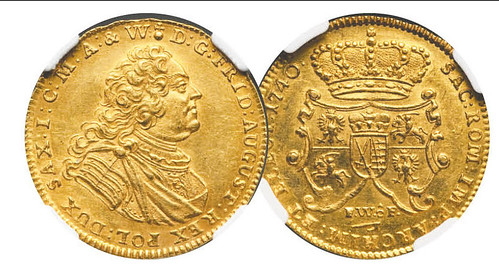
What’s described as an “extremely rare unlisted date” of Saxony’s two-ducat gold coin, this a 1740-dated piece struck in what’s now Poland, was recently discovered by a Canadian dealer.
After unknowingly purchasing the aforementioned piece in a bullion collection, the dealer, who wishes to remain anonymous, was unable to find the coin in any reference books. He contacted Peter McDonald, winner of the 2018 Charles D. Moore Professional Numismatic Award, for further information.
“He found it in a lot of gold coins he purchased – a bullion collection – and he couldn’t identify it,” said McDonald. “He went through all his books, the whole nine yards, but there’s nothing on it per se, being an unlisted date,” said McDonald. “He recognized it looked like a Polish coat of arms on the reverse, but he thought, ‘What would that be doing on a German coin?’”
The dealer sent McDonald images of the coin’s obverse and reverse, the latter of which features the “FWoF” mint mark, which indicates the coin was struck by Dresden mint master Friedrich Wilhelm o Feral (1734-64).
“As soon as I saw the ‘FWoF’ mintmark, I knew it was good, but when he advised me it was 6.96 grams, I realized it was extraordinary.”
This issue normally comes with a half- or one-ducat denomination, but a two-ducat example is “special,” McDonald said, adding he checked the Gold Coins of the World catalogue authored by Arthur and Ira Friedberg, and “this date was not noted.”
Two-ducat coins dated 1735-39 with the “FWoF” mintmark are listed as #2843, but no 1740-dated examples are known.
The coins depict the right-facing bust of Frederick Augustus II, who served as elector of Saxony in the Holy Roman Empire from 1733-63, on the obverse. He was also the king of Poland and grand duke of Lithuania around this time.
A crowned coat of arms of Augustus II (also known as Augustus III of Poland) is depicted on the reverse.
“Your normal Polish coins and your Saxony coins are usually half ducat or one ducat, but this is two ducats, meaning it’s a multiple,” said McDonald. “It would’ve been struck for a special occasion. Any time there’s an unlisted multiple coming onto the market almost 300 years after it was struck, it’s pretty exciting.”
The coin has been graded by NGC and will appear in the Heritage 2019 New York International Numismatic Convention World Coins Signature Auction. -Editor
To read the complete article, see:
‘Extremely rare’ Saxony coin found in Canada
(http://canadiancoinnews.com/extremely-rare-saxony-coin-found-in-canada/)
THE FIRST GOLD COIN OF PARAGUAY
Raúl Olazar submitted this article on the first gold coin of Paraguay, translated to English by Juan Cálcena. Thank you both! -Editor
Most Paraguayans have the erroneous belief that there were tons of gold coins in the Triple Alliance War, also known as The Great War (Paraguay against Brazil, Argentina and Uruguay from 1864 until 1870). Although most of the population had then robust belongings, the goal of this article is to demystify that there were — or perhaps still are — large amounts of gold coins buried somewhere beneath the Paraguayan lands. This sort of legend is locally known as Plata Yvyguy, which translates from the Guaraní language to “buried money”.
Another goal is to recognize, from previous researches, that the citizens, in some cases, buried their belongings and these were some precious metals or copper coins hoping that at the end of the war they could find them again. Silver or gold coins from other countries were also buried, but not in large quantities, because those were the main currencies back at the time.
Paraguay has modern numismatic items such as commemorative gold coins issued by the Central Bank of Paraguay under various circumstances and on different topics. But these were issued a long time after the Triple Alliance war ended.
Numismatics is not something to which most collectors practice in Paraguay. Most of the information is still hard to find when it comes to research certain currencies. Amongst them, for example, the first national gold coin a Paraguayan gold doubloon or four strong pesos. Many mysteries still surround the first gold coin minted during the Francisco Solano López government (1862-1870) as for example the produced quantity of these coins.
Thanks to the research of several numismatists both foreigners and Paraguayans there are some very good references about this coin that came to be called only a design.
During the Triple Alliance war, the Asunción’s high-class mistresses gathered on February 24, 1867 and reached an agreement, which consisted on gifting their jewels and jewelry in order to help to pay the costs of war. President Francisco S. Lopez accepted this offer. From the Paso Pucú barracks, a Paraguayan defense area, he ordered that the twentieth part of the donation to be used for the coinage of the first currency of Paraguayan gold coin, according to a decree signed on September 11, 1867. Research has shown that just a few coins were made and therefore would only have circulated among relatives or close friends of Lopez.
Two designs of different assayers are known from this coin: one of them was the French Luis Carlos Bouvet and the other Leonardo Charles. Research indicated that only the Bouvet design had been issued because there was more than one copy. Charles’s design has only one coin and was property of Enrique Solano López, son of Francisco S. López. Its whereabouts is nowadays unknown.
Professor Juan B. Rivarola Paoli sentenced that these coins are just a pattern and can’t be called a massive produced Paraguayan gold coin.
In 1854 and 1855 Mr. Bouvet designed some coins for the Paraguayan state. In one of those coins, in the obverse, there was an Astraea figure and in her left hand there was a sword and a scale balancing. On the other hand, there was a laurel leave. She is seen in the middle of a palm and olive leaves. The date, of 1855. The reverse bears the legend REPUBLIC OF PARAGUAY; the Paraguayan heraldic lion with a Phrygian cap and the pike flanked by the inscription PEACE AND JUSTICE and in exergue, the value of 4 PESOS FTES
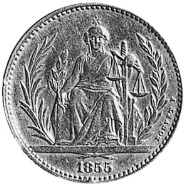
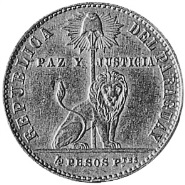
Within the donation of jewels, it is mentioned that an inventory of jewels and women jewels was ordered, in which the mistresses had to declare their holdings in precious metal and rhinestones.
It is presumed that there were few women who contributed to the donation because it was voluntary. Even so, it’s still unknows to this day why the Government only accepted 5% of the amount stated in this inventory. President Francisco S. Lopez had answered a letter published in the Semanario (a newspaper) in September 1867, that the national income was enough for the expenses of the State and the budget for the war and that, consequently, only one twentieth of that generous offer was accepted to mint the first paraguayan gold coin, which would not be given to circulation but would serve to commemorate the female detachment from wealth in time of war.
On the Charles design the only available information is the that it belonged to the Lopez collection, said the Argentine Enrique Peña, who mentioned that Don Enrique S. Lopez had shown him the aforementioned design.
REVERSE: The legend REPUBLIC OF PARAGUAY. In the center, a lion sitting and facing the right side. Behind him, the radiant Phrygian hat and at the top, the phrase PEACE AND JUSTICE and in the lower side, the value of 4 strong pesos.
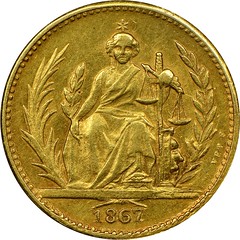

BOUVET design
OBVERSE: An Astraea figure and in her left hand a sword and a scale balancing. On the other hand, a laurel leave. She is seen in the middle of a palm and olive leaves. The date, of 1867.
REVERSE: In the upper part, the legend REPÚBLICA DEL PARAGUAY and in the lower part, the phrase THE VALUE OF FOUR STRONG. The Lion seated with the Phrygian cap behind and in the upper part PEACE AND JUSTICE in the lower one the year of minting and / or issue 1867, the engraver's signature was also seen on the front.


CHARLES design
REVERSE: The legend TO PREVAIL OR DIE at the top, at the bottom, the palm and the olive tree, in the center, a five-pointed star on top of a shield that shows a lion fighting against the emblems of Argentina, Brazil and Uruguay. Was a gold coin with a 22 mm module.
Only one specimen of the first coin is known to Paraguayans. This is presumably kept in the Museum of Rio de Janeiro, Brazil. Still very little is known about it. Mr. Miguel Ángel Pratt Mayans, a numismatic expert, mentioned about the existence of at least five gold coins with the Bouvet design.
With the press acquired by Mr. Juan A. Gelly in the naval arsenals of Rio de Janeiro during the Government of Don Carlos Antonio López, the first coins of national stamp were minted. This work was carried out using the same dies used in England. Also, several tests were stamped using the same press: the currency of 1867 and several decorations or military awards.
General Francisco S. López went to Europe to several countries from June 1953 to January 1855 as a plenipotentiary ambassador. He went there to interact, hire technicians, acquire weapons and other issues. He also had the concern of hiring Mr. Bouvet and entrust him to make coins. According to William WF Cristensen, he “was the very competent maker of the House of Coins of France”.
With the designs that were brought from Europe and Asuncion, several tests were made in gold, silver, copper and in some other metals dated in 1854, 55, 64, 66, 76, 68 and 1869. In addition, several foreign currencies were reasealed with a small Paraguayan shield (the well-known lion).
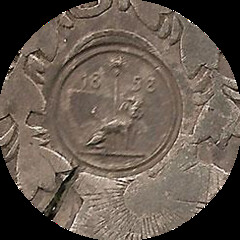

The first image obtained of the Charles coin of the first gold coin of Paraguay was thanks to the Professor Mr. José María Conde, president of the Argentine Numismatic Association who had presented the image to Mr. Carlos P. Scala.
All the tests carried out at that time were given to the General who at that time was Francisco S. López. He kept them until he died. In the year 1863 Francisco S. Lopez acquired a thousand coins from Montevideo, all already classified with an important collection of minerals, with their respective furniture and settled in the Old House of the Governors that was located in front of the former Military College.
At the end of 1864 the Great War broke out and everything disappeared, only the designs that the Marshal kept jealously among his belongings were saved. Francisco dead, everything was given to his eldest, Enrique S. López, who at some point needed and sold everything given the situation in which he and his brothers were. So, he transferred that collection of designs to Buenos Aires, part to Mr. Manuel Ricardo Zemborian and part to Dr. Andres Lamas.
In November 1905, by judicial order, all the money and the files of Mr. Lamas were auctioned. A catalog was printed and in it there were several hundred objects, currencies and documents belonging to Enrique S. Lopez. These were acquired at the auction by Enrique Peña and José Marco Del Pont.
The collection was again auctioned in April 24th and 27th, 1972. The auctioneers were the Bulrich of Buenos Aires and the liquidator was Mr. Ferrari, who in payment of his fees chose several coins, including Paraguayan designs and military awards that also belonged to the collection of the Marshal. These were bought by the Fragnoli brothers in Buenos Aires.
When Dr. Ferrari died, the descendants sold part of their collection and four of the important rare designs from Francisco Solano López were bought by Mr. Alejandro Portaluppi and were preserved in his collection.
At some point, these Paraguayan coins were acquired by a Paraguayan so they could return to their country.
Due to all the work done at the time by the Marshal Francisco Solano López in terms of coinage, designs, preparation of stamps, delivery and making of prizes and decorations of war he is known as the FIRST PARAGUAYAN NUMISMATIST.
'MONEY TIME' AUTHOR WINS 2018 SHEKEL PRIZE
Mel Wacks submitted this article about 2018 winner of the Shekel Prize. -Editor
“MONEY TIME, 70 YEARS OF CURRENCY IN ISRAEL”
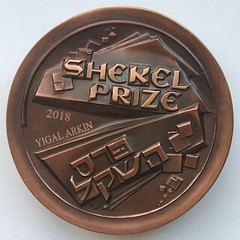
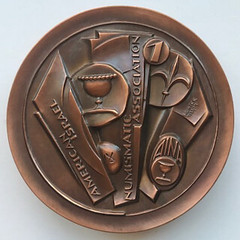
The Arkin Shekel Prize Medal, designed by Victor Huster
The winner of the 2018 Shekel Prize for the best work published in 2017 on the subject of Judaean, Jewish or Holy Land numismatics is Yigal Arkin, for his book “Money Time, 70 Years of Currency in Israel.” The other nominees were “Israel Numismatic Research” published by the Israel Numismatic Society, “The Coinage of the First Jewish Revolt against Rome” by Robert Deutsch, and Interpreting Ancient Jewish coin Symbols by Dr. Gary Fine. The judges were Mel Wacks (chair), David Hendin, Ira Rezak, Allen Berman and Simcha Kuritzky.
Money Time tells the story of the banknotes and coins of the State of Israel over its 70 year history, from the day of the declaration of independence on May 14, 1948. The book reviews the banknotes and coins of the British Mandate period in Palestine and those issued by the State of Israel. Backgrounds are presented about the designs, along with illustrations relating to the personalities and places depicted on Israeli and pre-state paper money and coins.
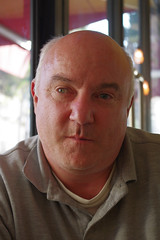 Yigal Arkin is also the author of Banknotes and Coins of
Israel, 1927-1998, Banknotes and Coins of Israel 1927-2006, and Monumental Money, all of which are available on Amazon.
Yigal Arkin is also the author of Banknotes and Coins of
Israel, 1927-1998, Banknotes and Coins of Israel 1927-2006, and Monumental Money, all of which are available on Amazon.
For information on ordering Money Time, contact the publisher Isranumis Coins & Paper Money Ltd. at isranumis@yahoo.com. The Shekel Prize is awarded annually by the American Israel Numismatic Association; to learn more about AINA, visit www.theshekel.org .
IMPORTANT HOCKEY MEDALS OFFERED IN BELL AUCTION
This blog article by Geoffrey Bell highlights Olympic medals in his firm's upcoming sale. Great rarities. See this week's Featured Web Site article for more information on Olympic medals. -Editor
Strike Olympic Gold with our Toronto Coin Expo 2018 Fall Sale
Canada has always taken its hockey very seriously. Today we recognize the sport as a source of national pride and it was no different a century ago. To the sports fan, Olympic medals represent the pinnacle of achievement and such medals maintain that folkloric ambiance for the collector. Geoffrey Bell Auctions Ltd. is pleased to present an assortment of historically important hockey-related medals in their upcoming Toronto Coin Expo 2018 Fall Sale.
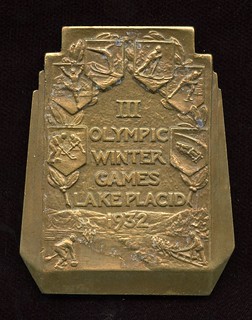
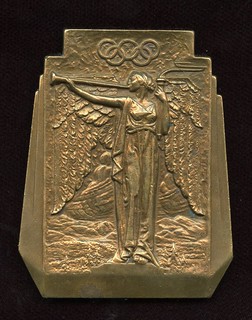
Lot 601: 1932 Winter Olympics Bronze Participation Medal
The 1932 Winter Olympic Games were held in Lake Placid, New York with a mere four teams competing for ice hockey gold. With an especially strong American team, fired on by the home crowd, the games were no walk in the park for the team from Winnipeg that earned the right to compete for our country by becoming Canadian senior hockey champions in 1931. This team, considered to be too defensive for the games by some, was proudly overseen by the President of the Manitoba Amateur Hockey Association, E. A. Gilroy, to whom the medals in this sale were awarded.
The Winnipeg Hockey Club defeated their USA rivals in the round robin by a score of 2-1 in heroic fashion, then met them in the final. They would be Olympic champions on the merits of that victory after the gold-medal game was called after three scoreless overtime periods.
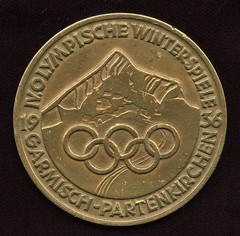
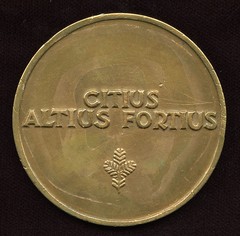
Lot 602: 1936 winter Olympics Bronze Participation Medal
In 1936 the Olympic games were held in Germany where many more nations were able to participate with decreased travel expenses. Great Britain stunned the favoured Canadian team with a 2-1 second round victory, allowing them to eventually claim gold without having to play Canada again. The Canadian Amateur Hockey Association, with Gilroy now as its President, would appeal this seemingly bizarre rule to no avail, leaving Canada with the silver after defeating an American team in the final round.
Included in the sale are a rare bronze participation medal from the 1932 Lake Placid games ; a silver participation medal and a bronze participation medal from the 1936 games in Germany, both rare pieces; a gold Past-President’s medal from the Canadian Amateur Hockey Association; and a bronze Manitoba Hockey Hall of Fame medal awarded to Gilroy in 1987.
It doesn’t get much better for those interested in Canadian hockey history, especially with the connection to these integral Winter Olympic Games. These items will be presented with the rest of our Toronto Coin Expo 2018 Fall Sale items September 27 and 28 at the Toronto Reference Library.
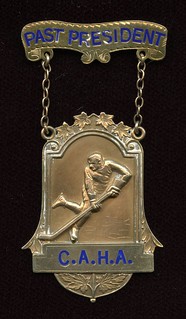
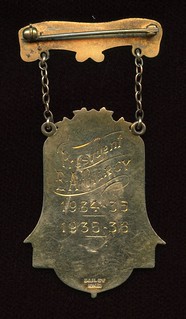
Lot 604: Canadian Amateur Hockey Association Past President's Gold medal
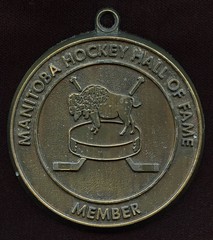

Lot 605: Manitoba Hockey Hall of Fame Medal
For more information, see:
http://www.gbellauctions.com/
SOTHEBY'S OFFERS FEYNMAN NOBEL PRIZE MEDAL
Sotheby's November History of Science & Technology auction will feature books, manuscripts and the Nobel Prize medal of physicist Richard Feynman. Here's a portion of the announcement from their September 13 email blast. -Editor
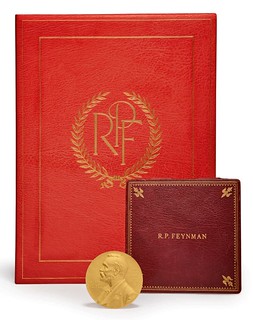 Few theoretical
physicists have managed to transcend the scientific community and enter the popular consciousness as Richard Feynman. With his book Surely You’re Joking, Mr. Feynman!, his
brilliant, inspiring, lighthearted and fun-loving personality reached millions.
Few theoretical
physicists have managed to transcend the scientific community and enter the popular consciousness as Richard Feynman. With his book Surely You’re Joking, Mr. Feynman!, his
brilliant, inspiring, lighthearted and fun-loving personality reached millions.
On 30 November, Sotheby’s will offer Feynman’s Nobel Prize along with a collection of the celebrated scientist’s manuscripts and his personal research library, which will headline the second-annual History of Science & Technology auction.
Feynman received the Nobel Prize in 1965 for his work, with Julian Schwinger and Shin’ichiro Tomonaga, in remaking the theory of quantum electrodynamics. His invention of ‘Feynman diagrams’ – pictorial representations of particle interactions – revolutionized the field. He is also considered by many to be the father of nanotechnology; in a 1959 talk entitled, “There’s Plenty of Room at the Bottom,” he proposed a challenge to the scientific community to start thinking on a very small scale, personally offering two prizes. A series of lectures on introductory physics that Feynman gave at Caltech between 1961–63 was edited and published as “The Feynman Lectures of Physics,” which is thought to be the most popular physics book ever written.
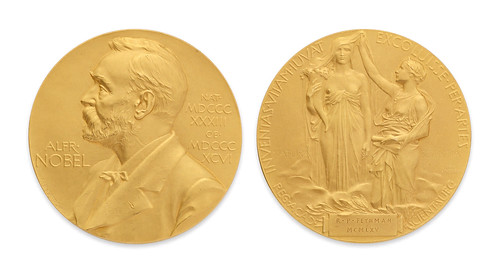
Image courtesy Sotheby's
To many numismatists, a Nobel Prize medal is a Nobel Prize medal. But provenance can play a big role, and the stature and fame of the recipient can greatly influence the price received at auction. It will be interesting to see where the auction gavel falls on this one. -Editor
SRI LANKA'S VARNISHED BANKNOTES
Dr. Kavan Ratnatunga of Sri Lanka submitted these notes on the Reserve Bank of India's varnished banknotes. Thanks. -Editor
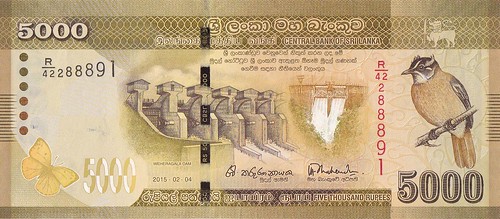
The Central Bank of Sri Lanka Annual report for 2014 Part02 Sec 5.2(a) states
"Several improvements were made to the quality of currency notes by increasing the thickness of currency paper and introducing a coating of varnish for low denominations of currency notes to enhance the durability of the Notes."
Denominations Rs 20, 50 and 100 with No change in 2010-01-01 date on the issue, or any Press release. I have reported this in my webpage
http://notes.lakdiva.org/cbsl/2010lkdpd/
And give the Serial numbers for each denomination with and without varnish in individual pages linked from it like
http://notes.lakdiva.org/cbsl/2010lkdpd/2010_lkdpd_20r.html
I'm not sure if SCWPM has listed it as a variety. These web pages are trilingual like the Ceylon and Sri Lanka Currency Notes. They are part of a website I have developed
over last year with about 200 web pages documenting with images of about 300 types of Ceylon and Sri Lanka currency notes since 1785 which also include a complete set of UV images
the most beautiful of which are posted at
http://notes.lakdiva.org/uvbest_lk.html
The Ceylon Currency website particularly on the Currency from 1785 to 1885 goes beyond what has been published in SCWPM and by Owen Linzmayer. The notes issued by Private Banks between 1844 and 1884 are considered as Specialized issues, when they were the only currency of Ceylon between 1856 and 1884.
To visit Kavan's web site, see:
http://notes.lakdiva.org/
Kavan Ratnatunga published an article in the SundayTimes of Sri Lanka about the ultraviolet light features of Sri Lankan banknotes - see the next article in this issue for an excerpt. -Editor
To read the earlier E-Sylum article, see:
INDIA CONSIDERS VARNISHED BANKNOTES (http://www.coinbooks.org/v21/esylum_v21n36a38.html)
SRI LANKAN BANKNOTE ULTRAVIOLET LIGHT FEATURES
Dr. Kavan Ratnatunga published an article September 15, 2018 in the Sunday Times of Sri Lanka about the ultraviolet light features of Sri Lankan banknotes. Here's an excerpt. -Editor
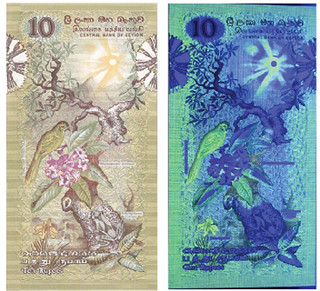 UV printing or images that are
only visible under Ultra Violet illumination is a security feature on modern currency notes, which most never see. They are seen by bankers and shopkeepers who check currency for
authenticity. Even collectors of currency notes, have not paid much attention to these features, which are rarely documented in catalogues.
UV printing or images that are
only visible under Ultra Violet illumination is a security feature on modern currency notes, which most never see. They are seen by bankers and shopkeepers who check currency for
authenticity. Even collectors of currency notes, have not paid much attention to these features, which are rarely documented in catalogues.
A few years ago you could only see it under UV illumination, as neither photographic film nor digital cameras were sensitive enough to capture a clear image of what is seen. However some digital cameras now have the sensitivity to record what is seen.
UV printing first appeared on Sri Lanka currency in December 1971 for a new highest denomination Rs.100 note with the bust of SWRD Bandaranaike, replacing the notes of 1970 issued just after demonetization. This was the only note with UV printing issued before the Republican Constitution of May 22,1972. The corresponding Rs. 50 note was issued in December 1972.
Initially UV printing consisted of, on the front, the outline of the flag Lion with Sword in raised right paw, of different sizes and the numeric denomination. On the back, a few wide vertical bands highlighting background micro-printing on currency notes were seen.
The lower denomination of Rs. 2, Rs. 5 and Rs. 10 with the Polonnaruwa stone sculpture popularly identified as King Parakarama Bahu got UV printing only in 1974-08-27. Signatures, date and serial number, were also printed in UV. All subsequent issues numbering about 50 types in total, have had some form of UV printing.
UV images were photographed at about 300 dpi with a Cannon Power Shot SX620 HS Full HD 20.2 Mega Pixel using 3 MB (2048×1536) mounted on a tripod and a UV lightbox, mounted with two 8W 365nm wavelength 288mm long Fluorescent tubes.
To read the complete article, see:
Sri Lankan currency under a different light
(http://www.sundaytimes.lk/180916/plus/sri-lankan-currency-under-a-different-light-311374.html)
LOOSE CHANGE: SEPTEMBER 16, 2018
Here are some additional items I came across in the media this week that may be of interest. -Editor
2018-W American Palladium Eagle Proof Coin
Here's a Mint News Blog piece by Lou Golino on the new 2018-W American Palladium Eagle Proof coin. -Editor
 The most eagerly
anticipated coin of the year, the 2018-W American Palladium Eagle Proof one-ounce coin, was launched by the U.S. Mint on September 6 at 12:00 noon EST with a mintage of 15,000
coins and a household limit of one.
The most eagerly
anticipated coin of the year, the 2018-W American Palladium Eagle Proof one-ounce coin, was launched by the U.S. Mint on September 6 at 12:00 noon EST with a mintage of 15,000
coins and a household limit of one.
To read the complete article, see:
2018-W American Palladium Eagle Proof: Collectors vs. speculators
(http://mintnewsblog.com/2018-w-american-eagle-palladium-proof-collectors-vs-speculators/)
An adventure for bibliophiles! -Editor
Legends Books, Antiques & Soda Fountain has transformed part of the old mine shafts and underground tunnels snaking beneath the surface of Sonora, California. What was once a general store and bank is now a lively cafe and soda shop with a quaint bookstore tucked below.
To read the complete article, see:
Legends Books, Antiques & Soda Fountain
(https://www.atlasobscura.com/places/legends-books-antiques-soda-fountain)
The Coin Collector's Cane
Anne E. Bentley forwarded this article about a cane with a hidden coin scale. Cool. Thanks. -Editor
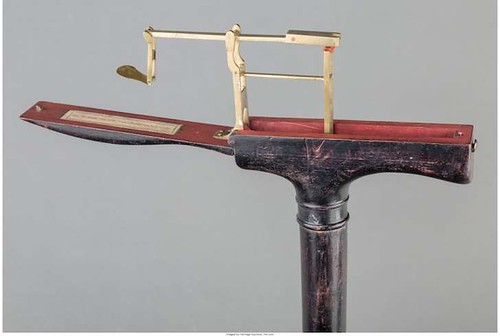
Inside the ebonized wood handle of this late 19th-century cane is a space for weighing and storing coins. Just push a button to reveal the tiny brass scale.
Estimated price: $7000 - $10,000
To read the complete article, see:
10 Vintage Canes With Amazing Hidden Feature
(http://mentalfloss.com/article/504623/10-vintage-canes-amazing-hidden-features)
FEATURED WEB SITE: OLYMPIC MEDALS
This week's Featured Web Site is the medals section of the Olympic organization site.At the first Olympic Games of the modern era in Athens in 1896, the winner was crowned with an olive wreath and received a silver medal. James B. Connolly of Massachusetts was the first modern Olympic champion to be rewarded thus. The 1904 Olympic Games in St Louis, were the first at which gold, silver and bronze medals were awarded for first, second, and third place.
With the exception of the medals for the 1956 equestrian events, the medals for the Games of the Olympiad became standardized starting in 1928. On one side, there was the traditional design of the goddess of victory, holding a palm in her left hand and a winner’s crown in her right hand. On the other, an Olympic champion was carried triumphantly by the crowd, with an Olympic stadium in the background. For the 1972 Games in Munich, the Organising Committee started a new trend, with a reverse designed by an artist from the Bauhaus school, Gerhard Marcks. A further design adaptation was introduced for the 2004 Games in Athens when the International Olympic Committee (IOC) approved the Organising Committee’s (OCOG) proposal for an updated version of the goddess of victory and the stadium.

www.olympic.org/olympic-medals

